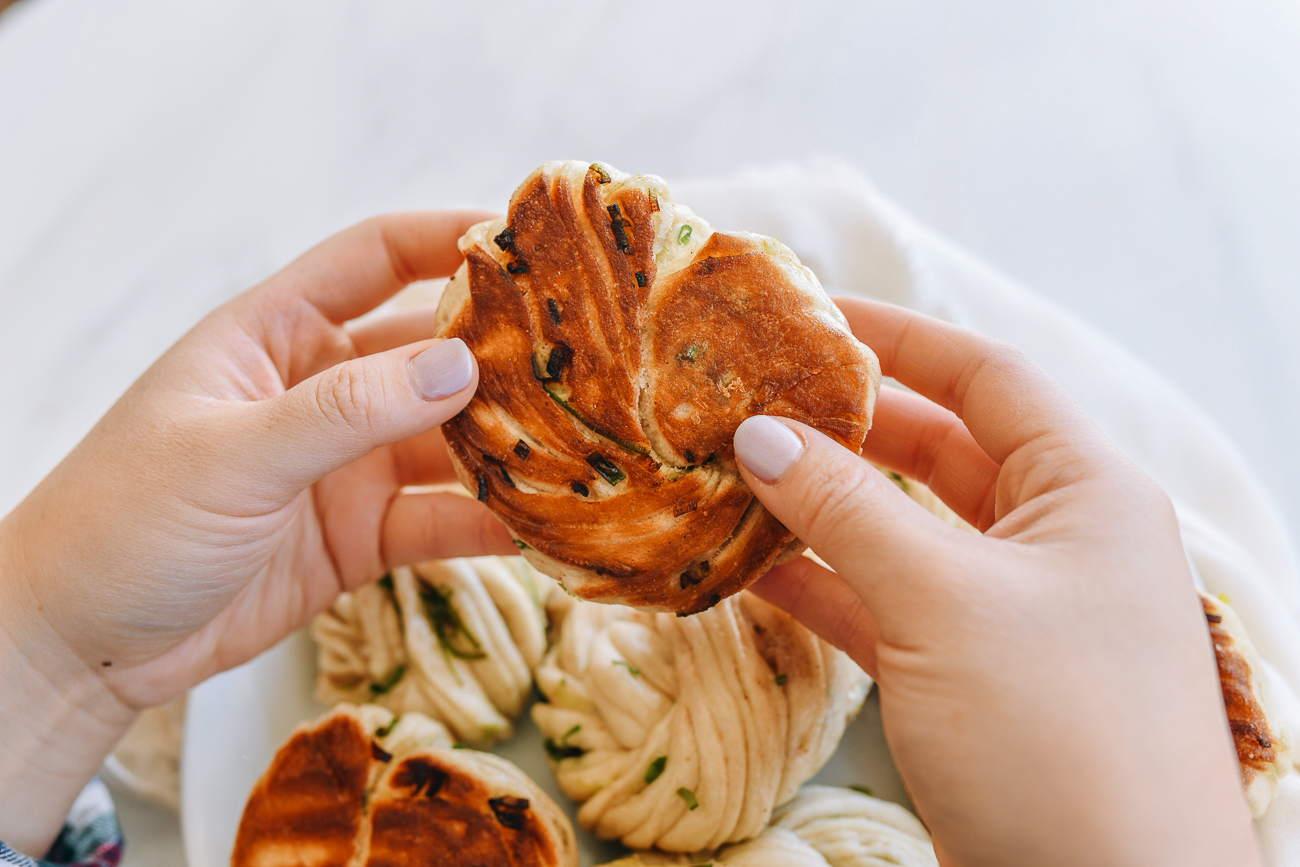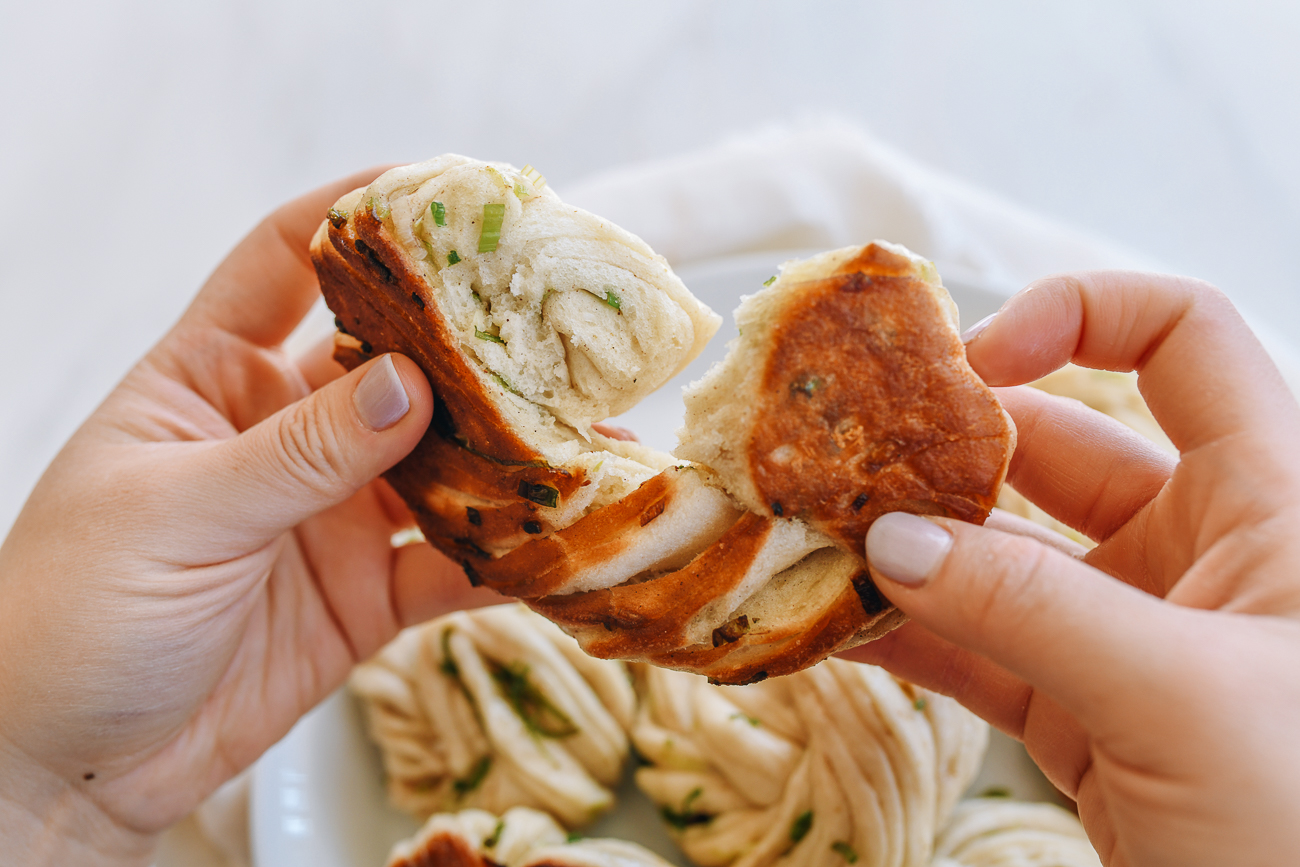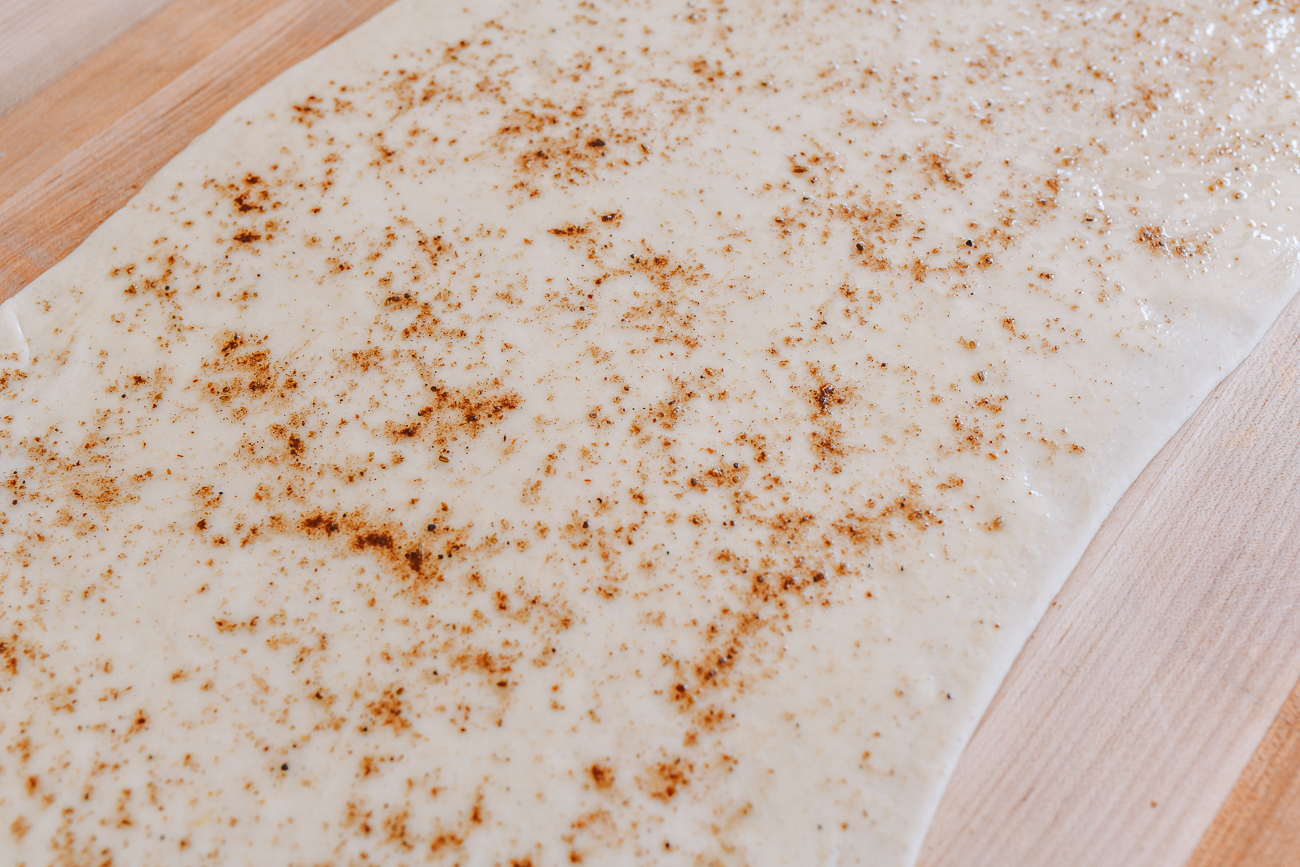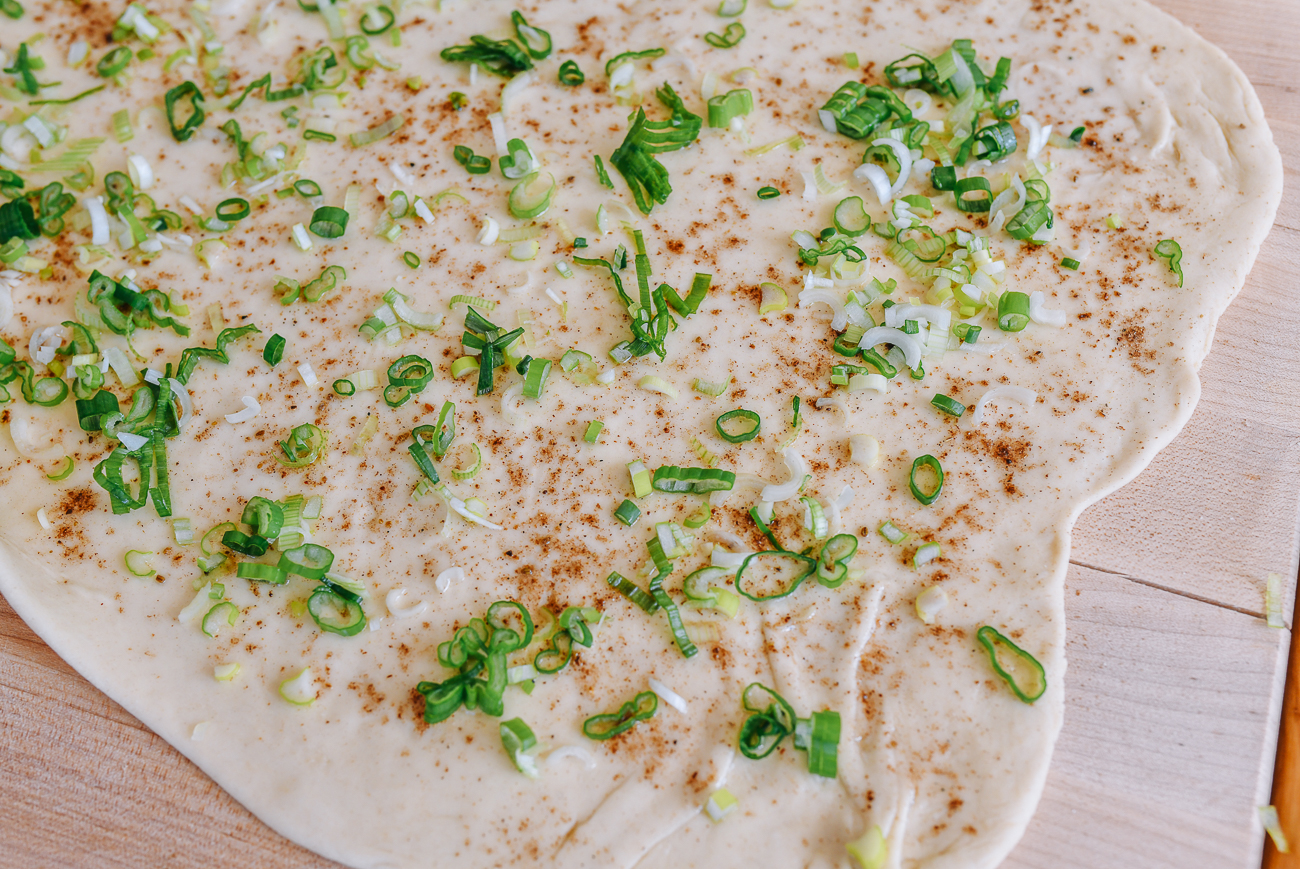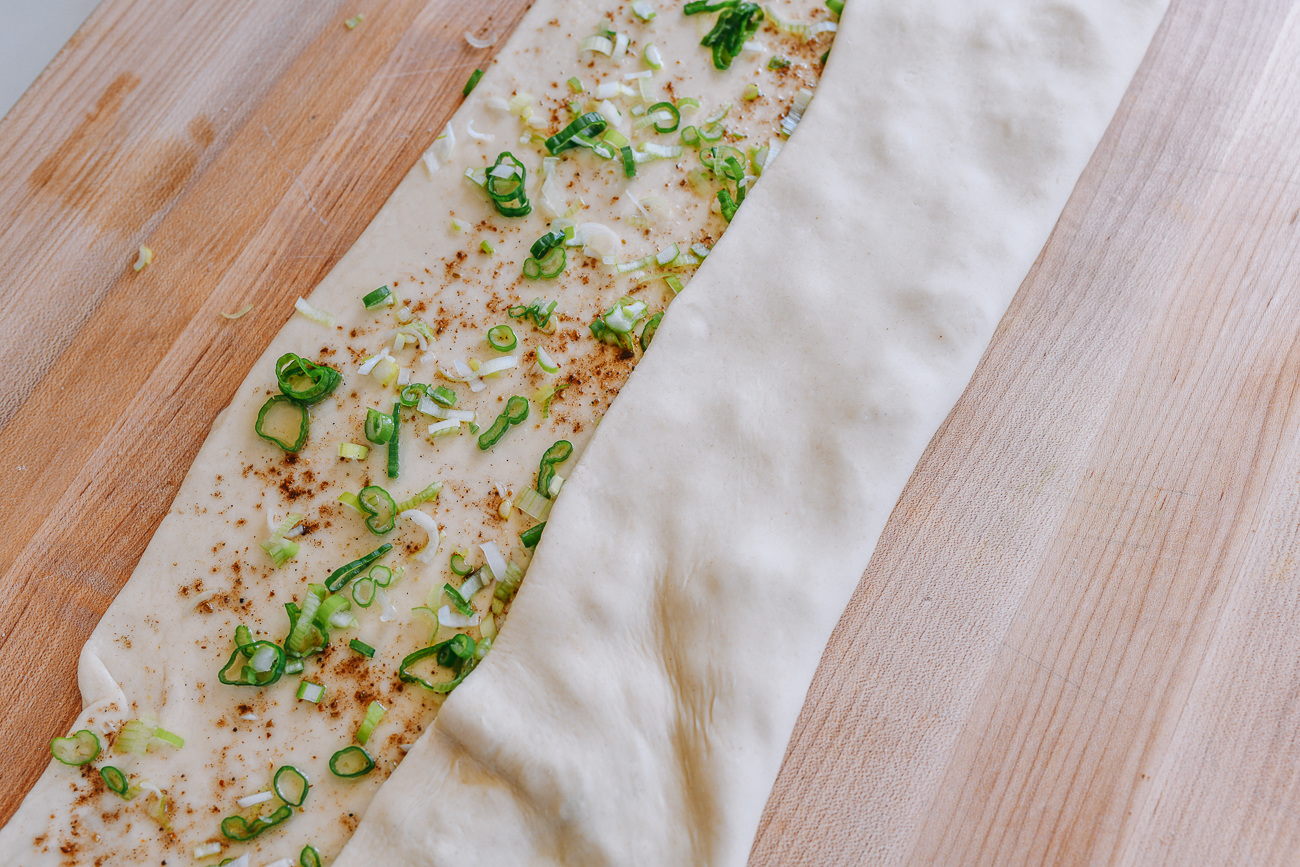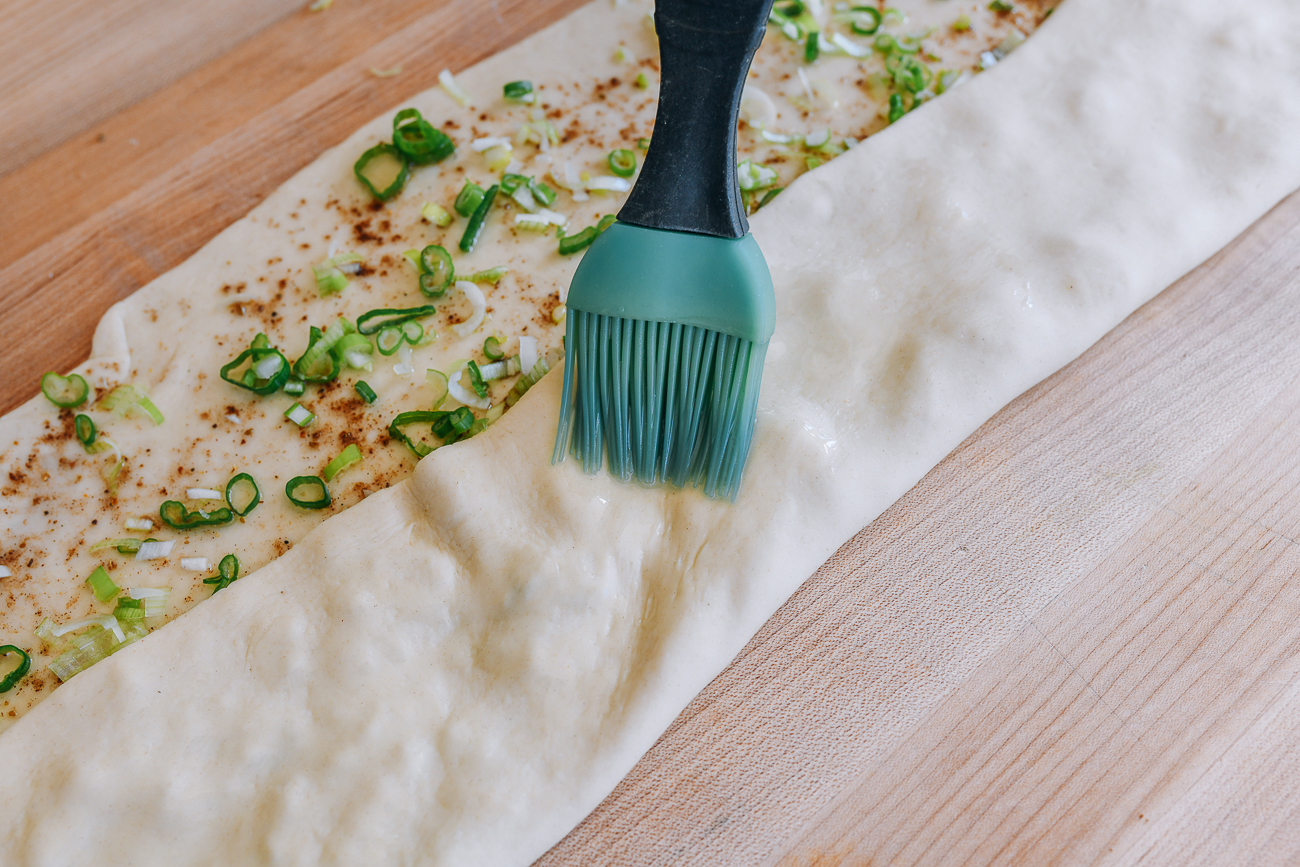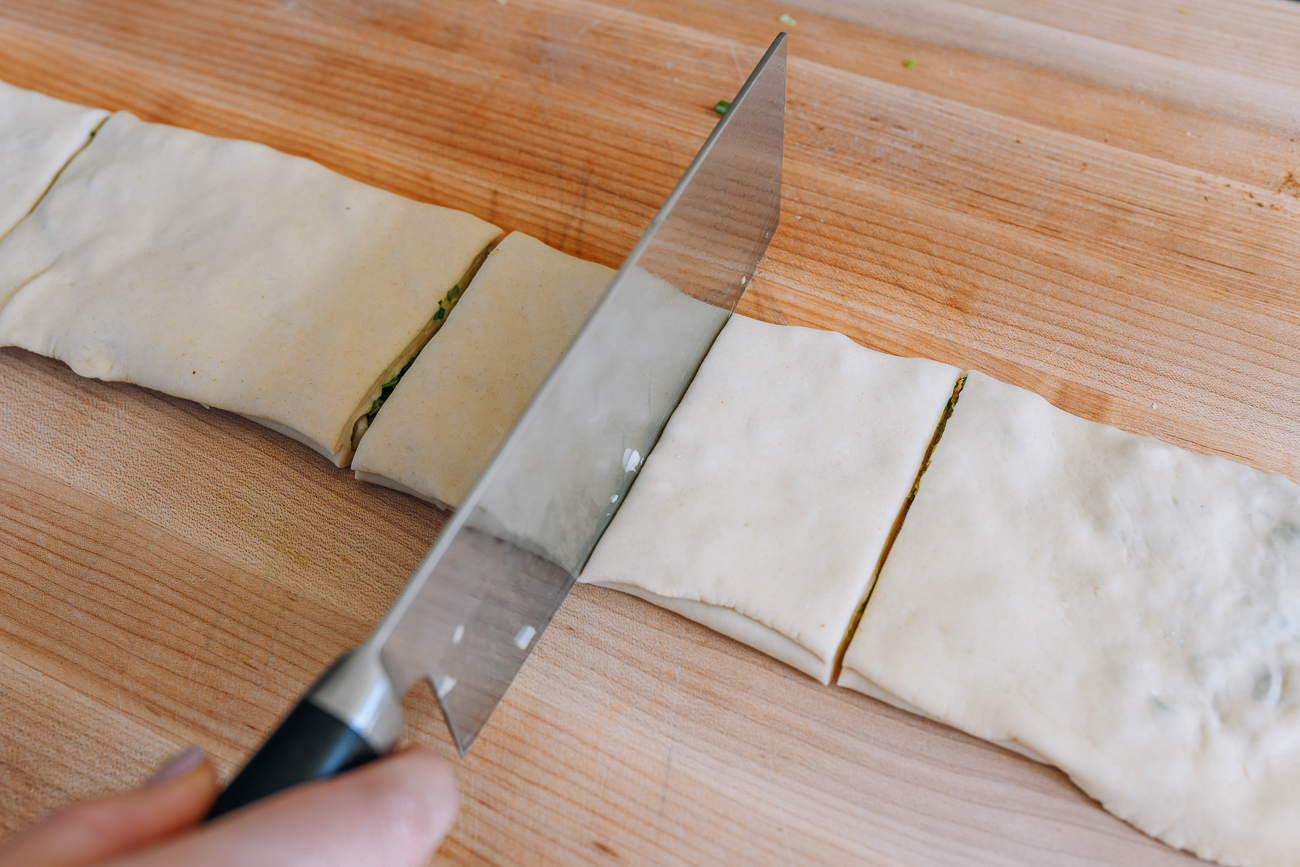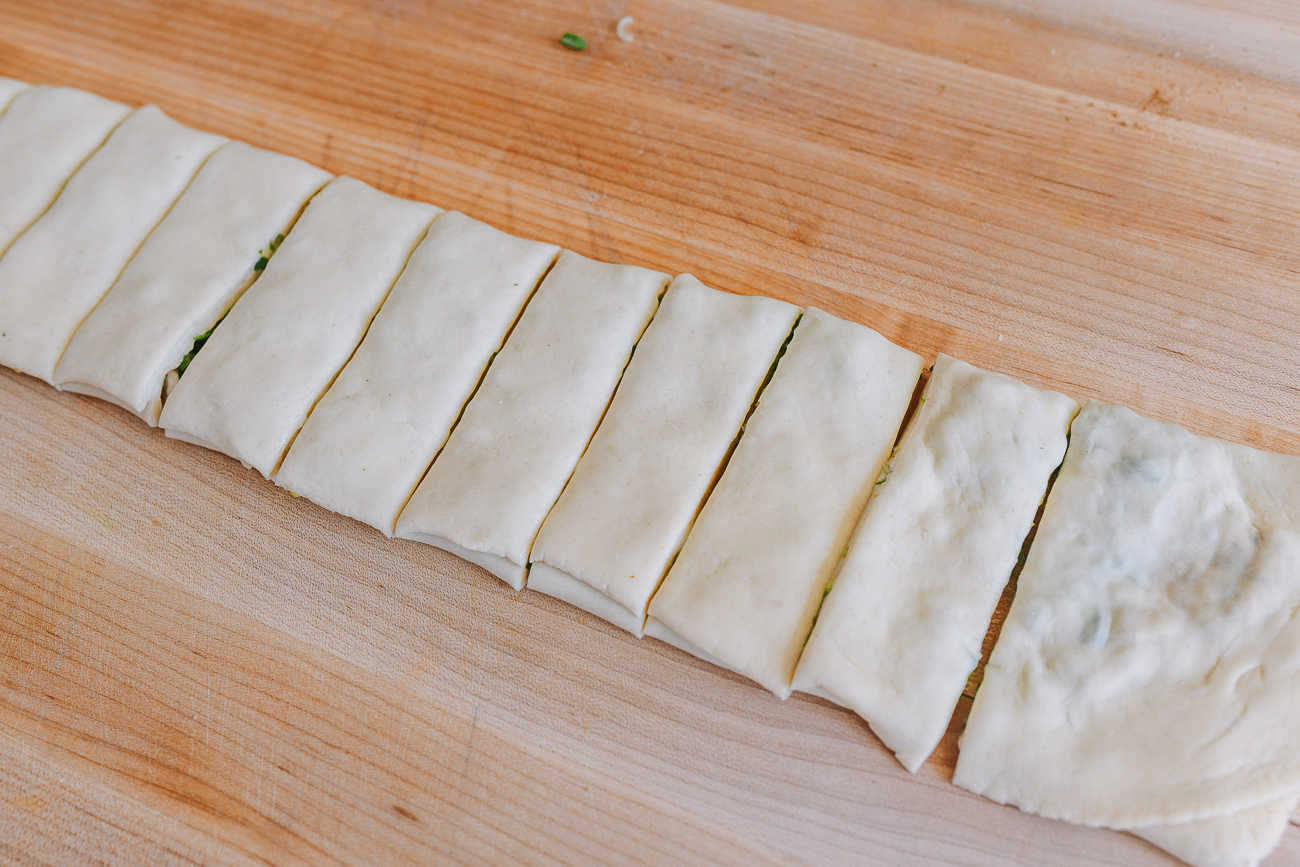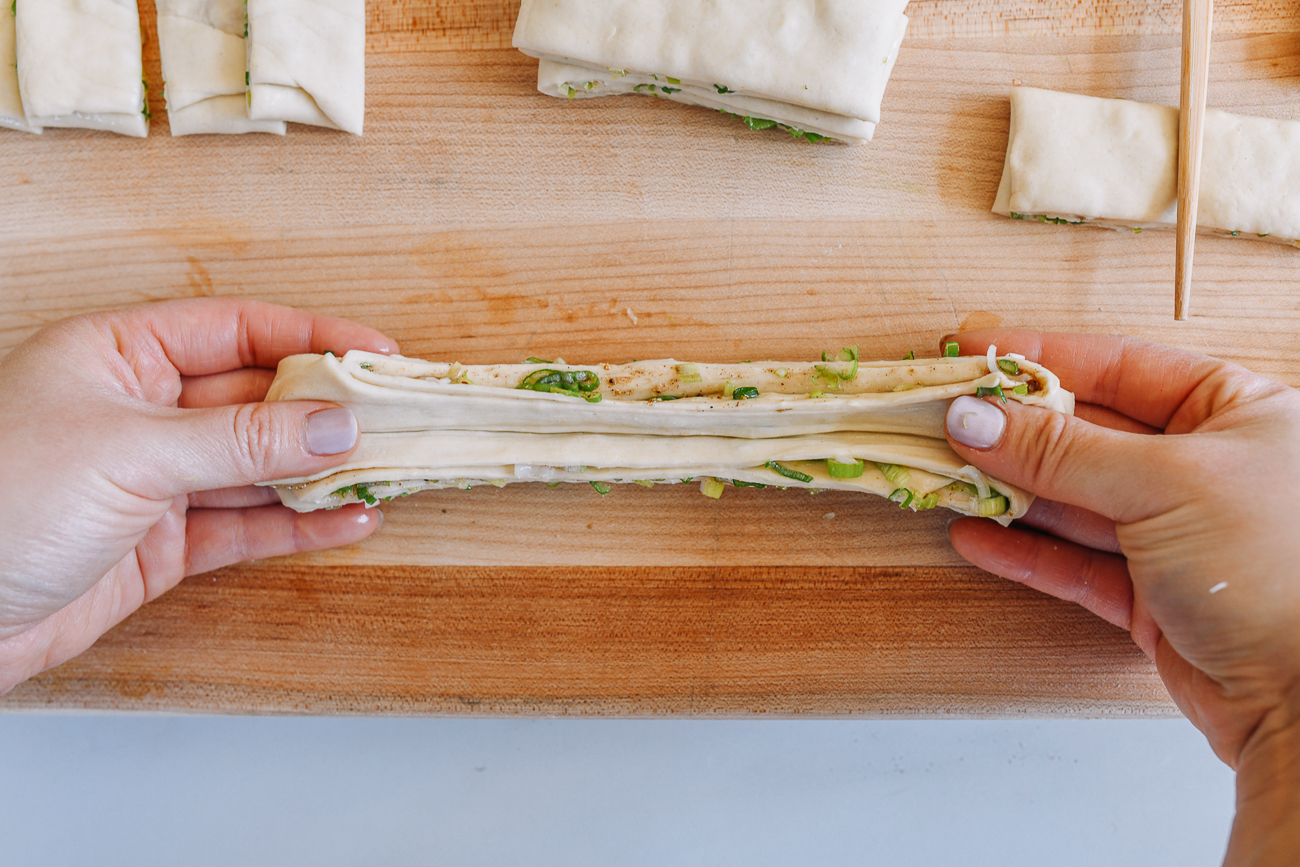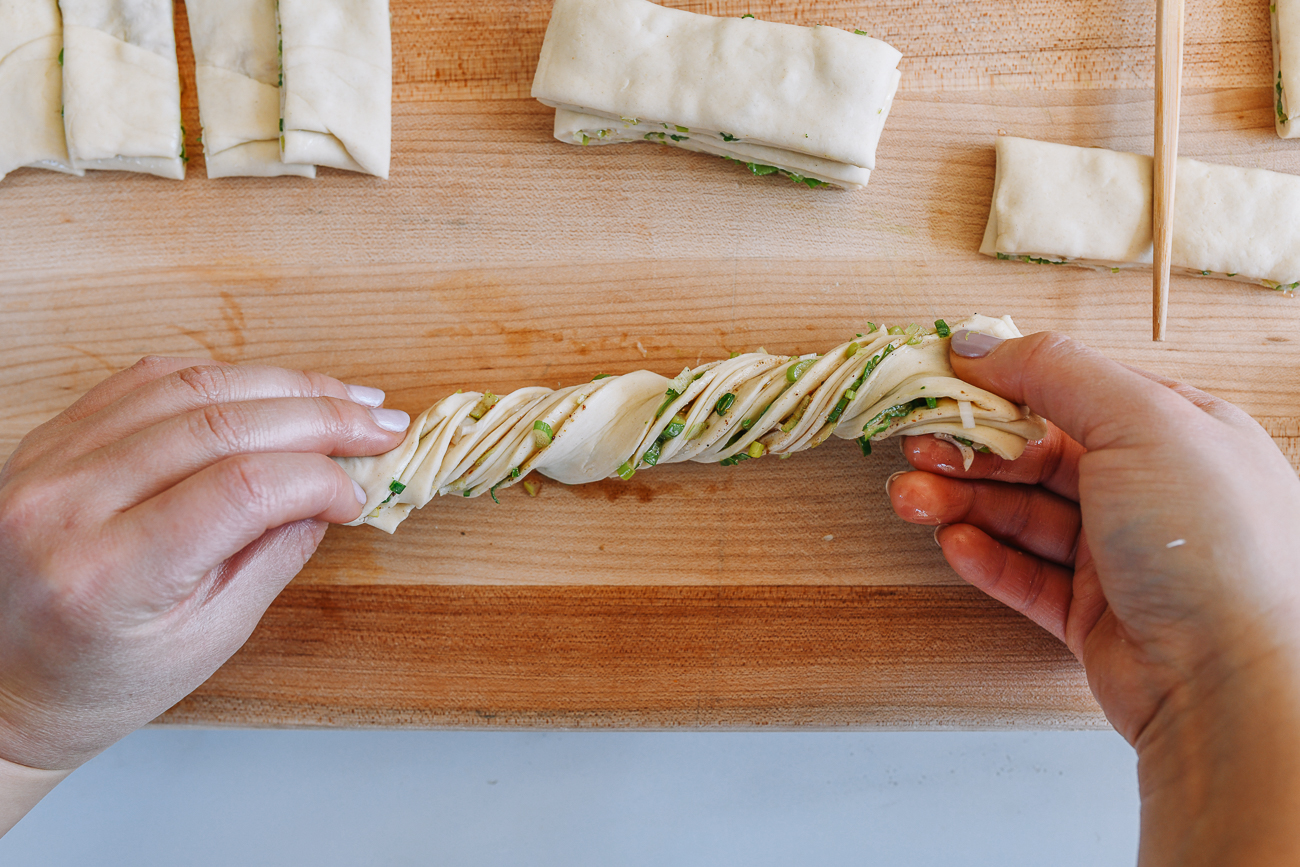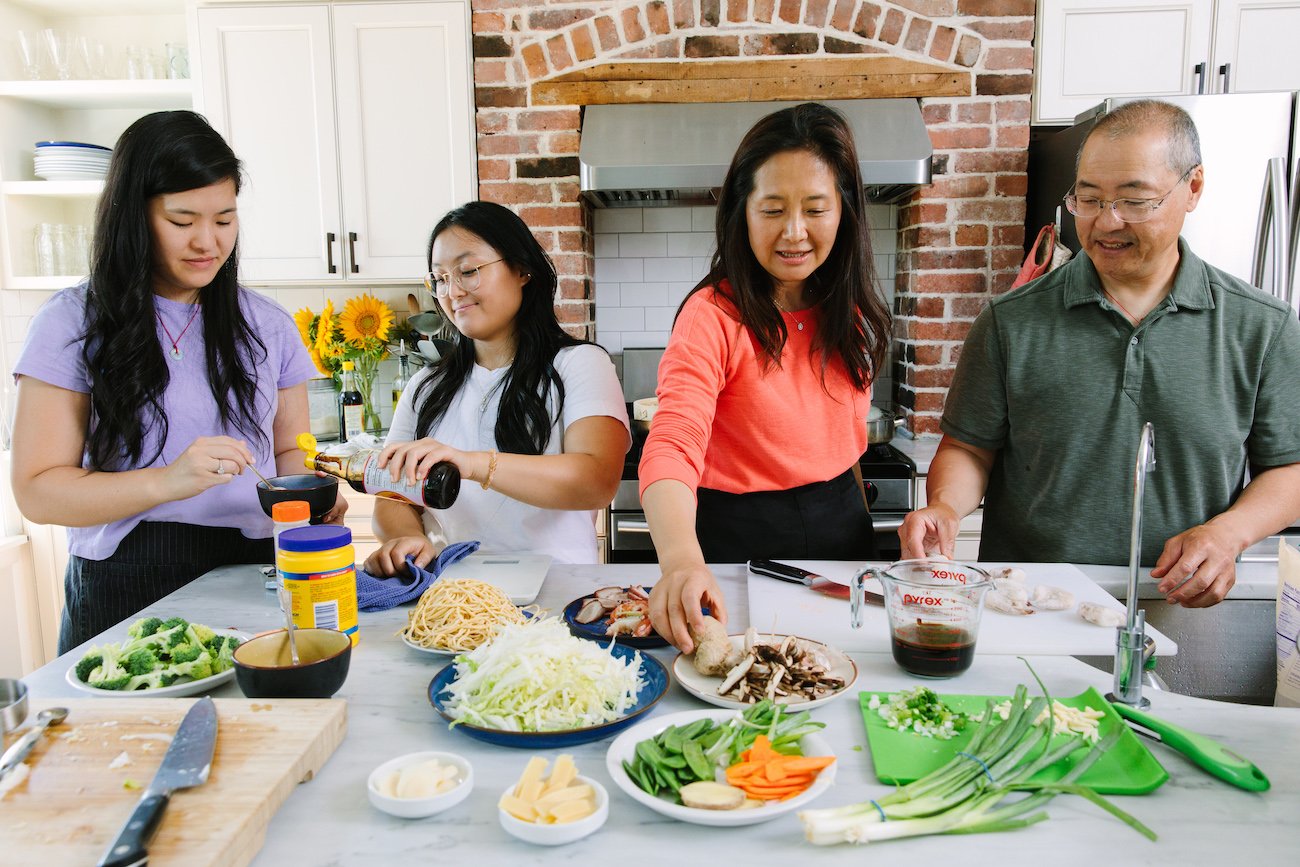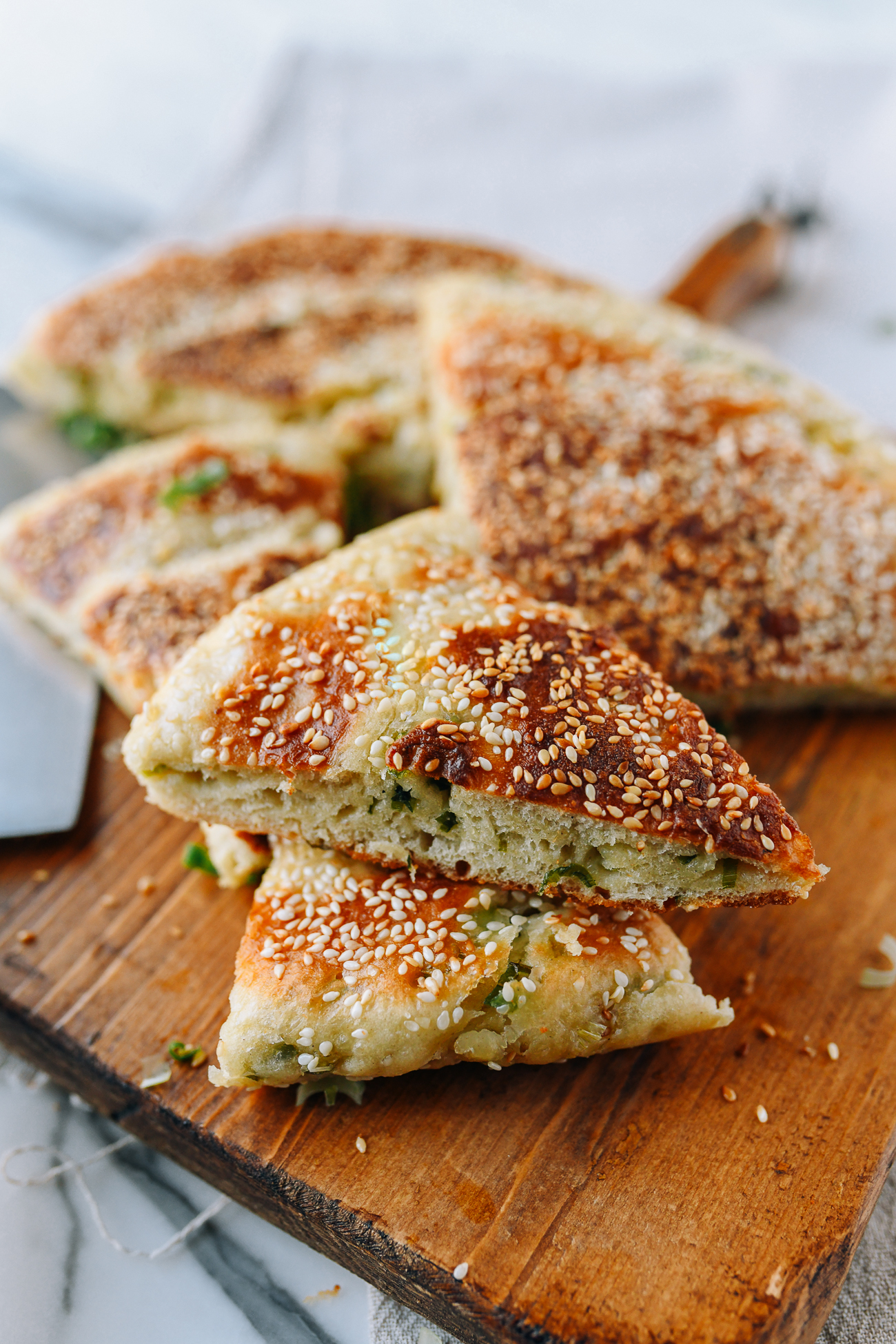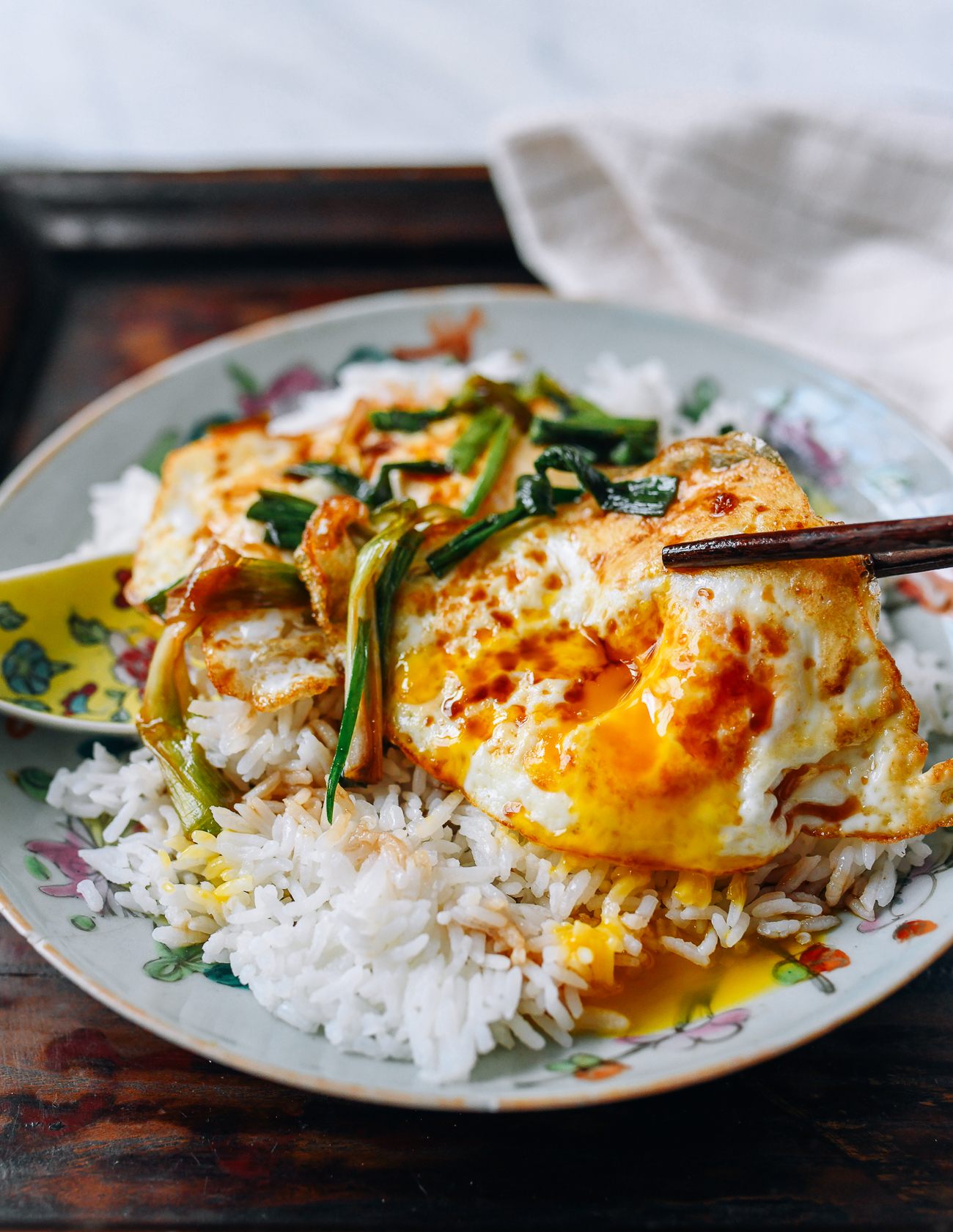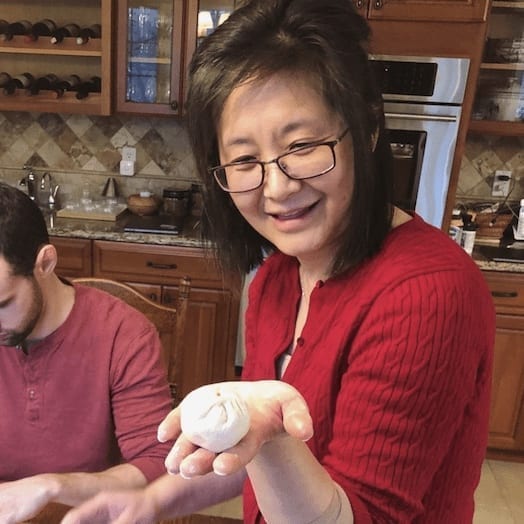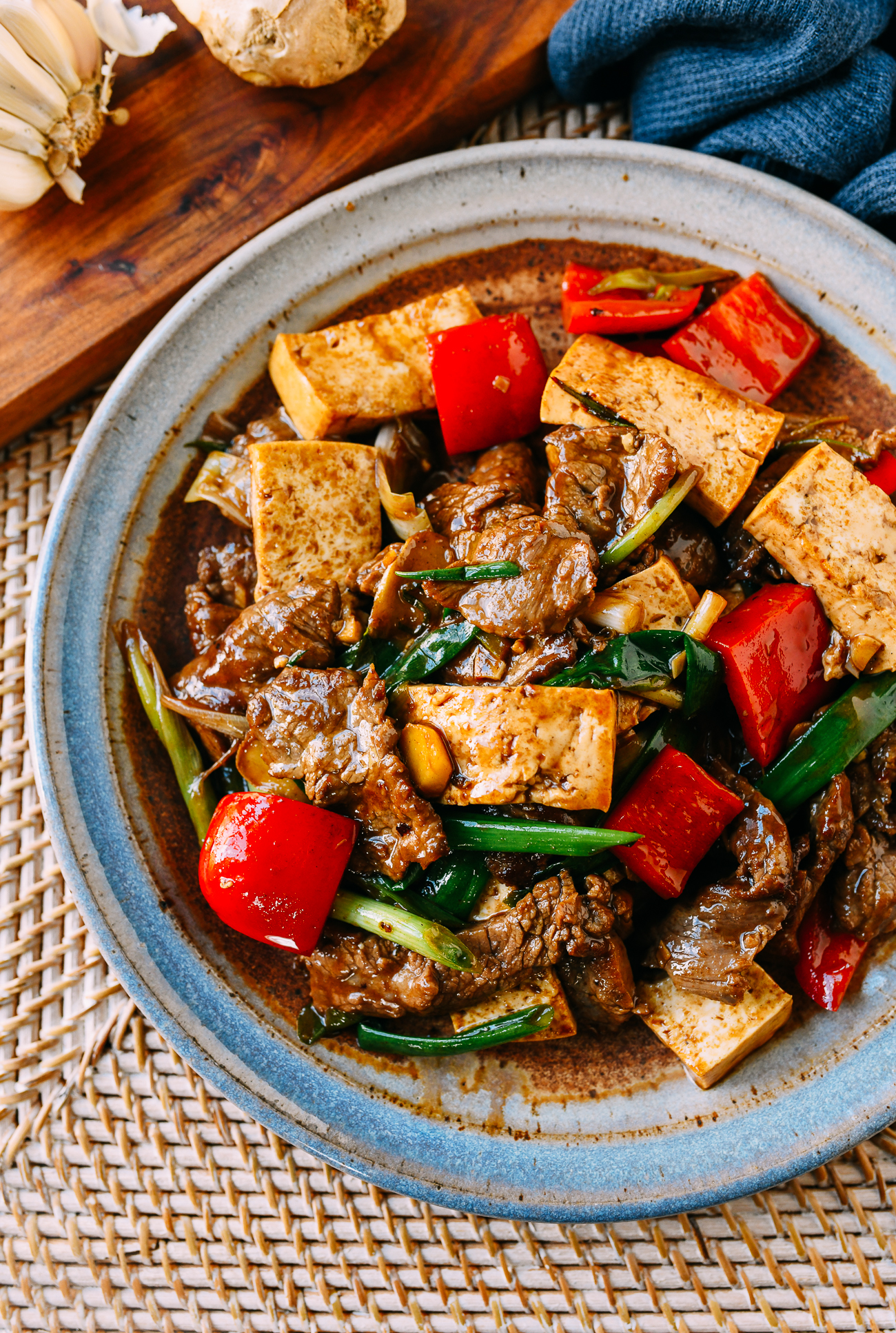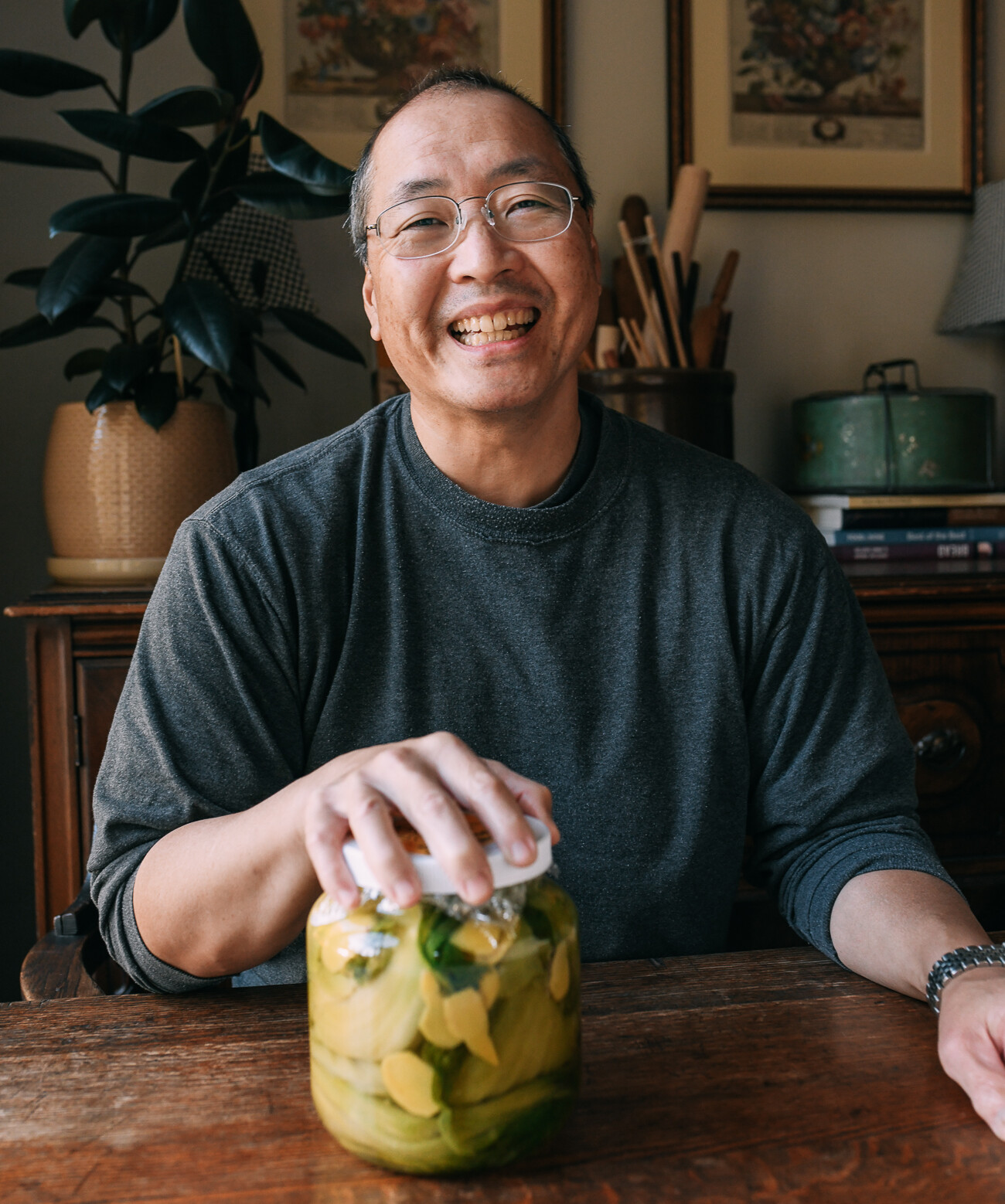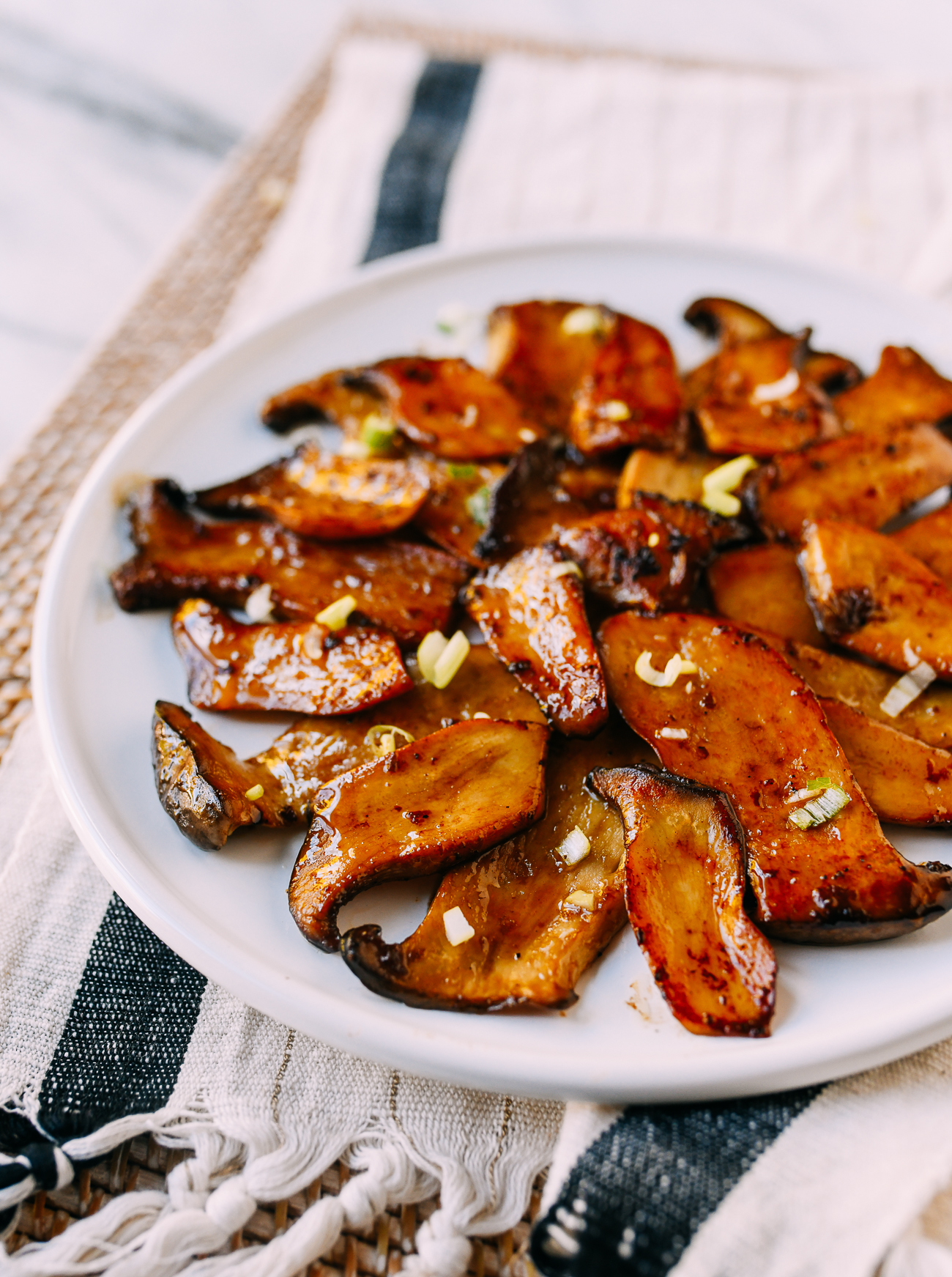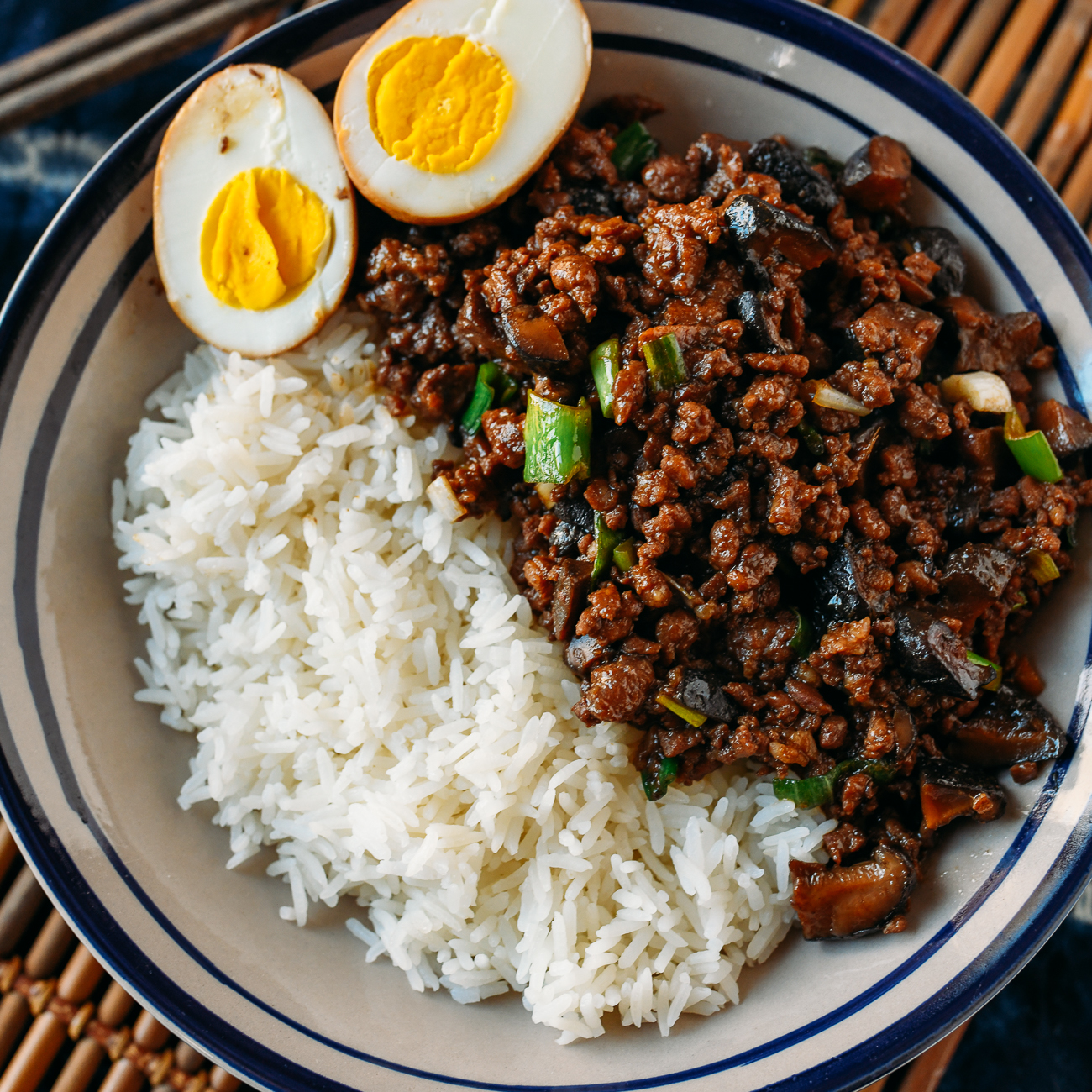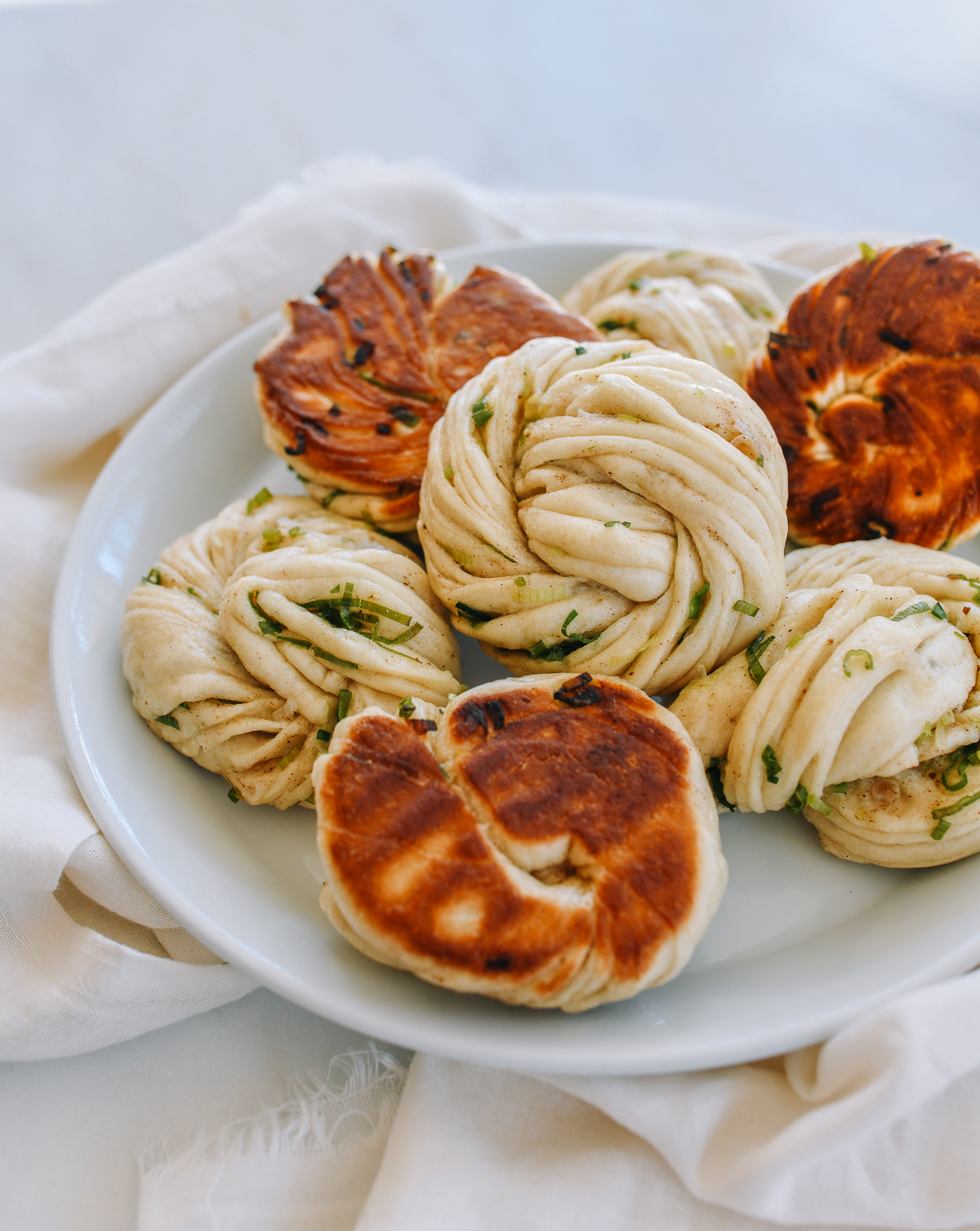
Chinese hua juan, or flower rolls, are beautiful to look at and delicious. These steamed scallion buns (which can also be pan-fried for crispy bottoms), are surprisingly tasty despite their simplicity, thanks to a few simple ingredients: salt, five spice powder, and plenty of scallions.
PASSING THIS RECIPE ON TO THE NEXT GENERATION
A long while back (March 2014), we posted this similar recipe for Chinese scallion rolls (with the unconventional addition of bacon!).
Between now and then, however, we have learned a lot more about Chinese dough-making, and this recipe is the result of many months of recipe development and testing.
Now that we’re all getting older, my mom wonders, in her words, “Who will be the next dough maker?” That is, her apprentice who will eventually reign over all things Chinese breads, buns, and baos.
As the current holder of the magic touch, she’s appropriately concerned about sharing her knowledge with the next generation. (Not to mention all of you, so you can do the same).
Unsurprisingly, there’s an element of sibling rivalry to all of this. Will Sarah or I be the better maker of intricate shapes? Who will be the best gauge of proper proofing? Currently, I’ve been knee deep in mantou making, while Sarah has been a dedicated Chinese bakery bun maker and student of sourdough.
While a winner has not yet been crowned, consider this recipe one of my entries in the race!
Tricks for the Best Hua Juan
Some of you may remember that I tried to make this recipe for Family Meal, the 3-episode digital series we did with Food Network, and that I made one key mistake.
The trick to great hua juan is oil in the right places! This ensures clearly defined layers so that when the buns cook, the layers of dough don’t simply meld together.
As for shaping the buns, don’t be intimidated. The dough will be pliable and stretchy, and if you follow the instructions, you shouldn’t have any problems twisting and knotting the dough into these little bundles of blooming layers.
On a related note, you’ll see that this recipe calls for a liberal amount of scallions. My mom says that this actually makes the buns look a little sloppy, but I say we prioritize taste over style! In my opinion, having scallions in every bite is key to a delicious hua juan.
Tip for extra crispy hua juan!
You can enjoy these hua juan just plain steamed, or browned on the bottom. To brown them, there are two methods.
My preferred method, which I describe in this recipe, is simply steaming the buns first in a bamboo steamer, and then browning the bottoms in a hot oiled skillet so they’re extra crispy.
The other method (not my preferred, but it’s more traditional) is steaming the hua juan in a covered non-stick or cast iron skillet with water. When the steaming water cooks off, the bottoms will end up browned—similar to the process of pan-frying dumplings.
If you want to do the latter (a good option if you don’t have a steamer), add a couple tablespoons of oil to a hot skillet over medium-high heat. Place the buns, about 2 inches apart, and allow the bottoms to begin browning lightly. Then add ⅔ cup water, cover, and steam. When the water has evaporated, remove the lid, let the buns continue to brown to your liking, and serve.
Hua Juan Recipe Instructions
In a liquid measuring cup, add the water, yeast, and sugar. Stir and let the mixture stand at room temperature for 15 to 20 minutes, until foamy. (This may take longer in colder temperatures).
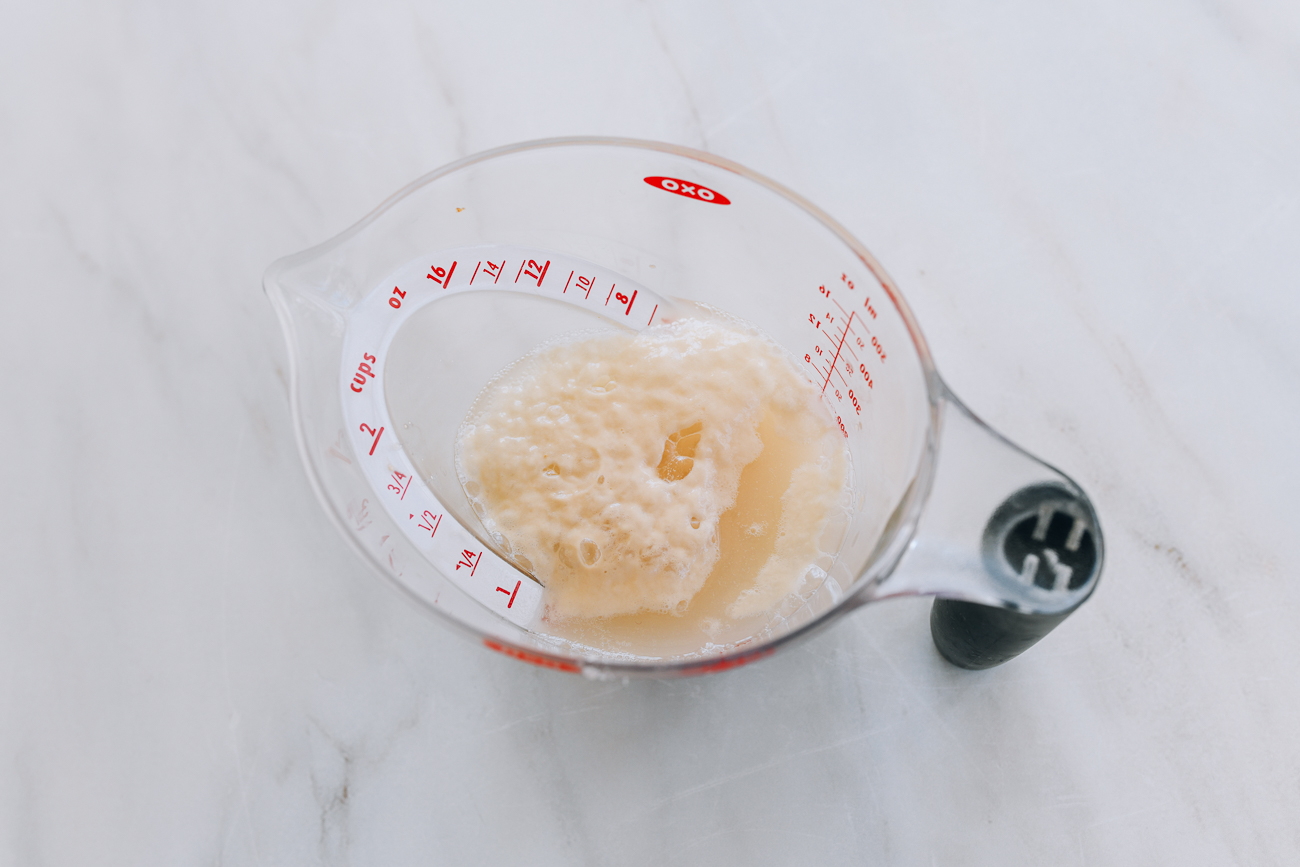
To the bowl of a stand mixer fitted with the dough hook attachment, add the flour, baking powder, and ¼ teaspoon salt. Turn the mixer on low to combine the dry ingredients, then gradually add the water.
Once the dough comes together, let the mixer knead the dough for 20 minutes. It may look sticky at first, but the flour will absorb the water during kneading. It should soon look smooth, with no dough sticking to the sides of the bowl.
(If you don’t have a stand mixer, start by stirring the water into the dry ingredients with a wooden spoon or rubber spatula. Then knead by hand.)
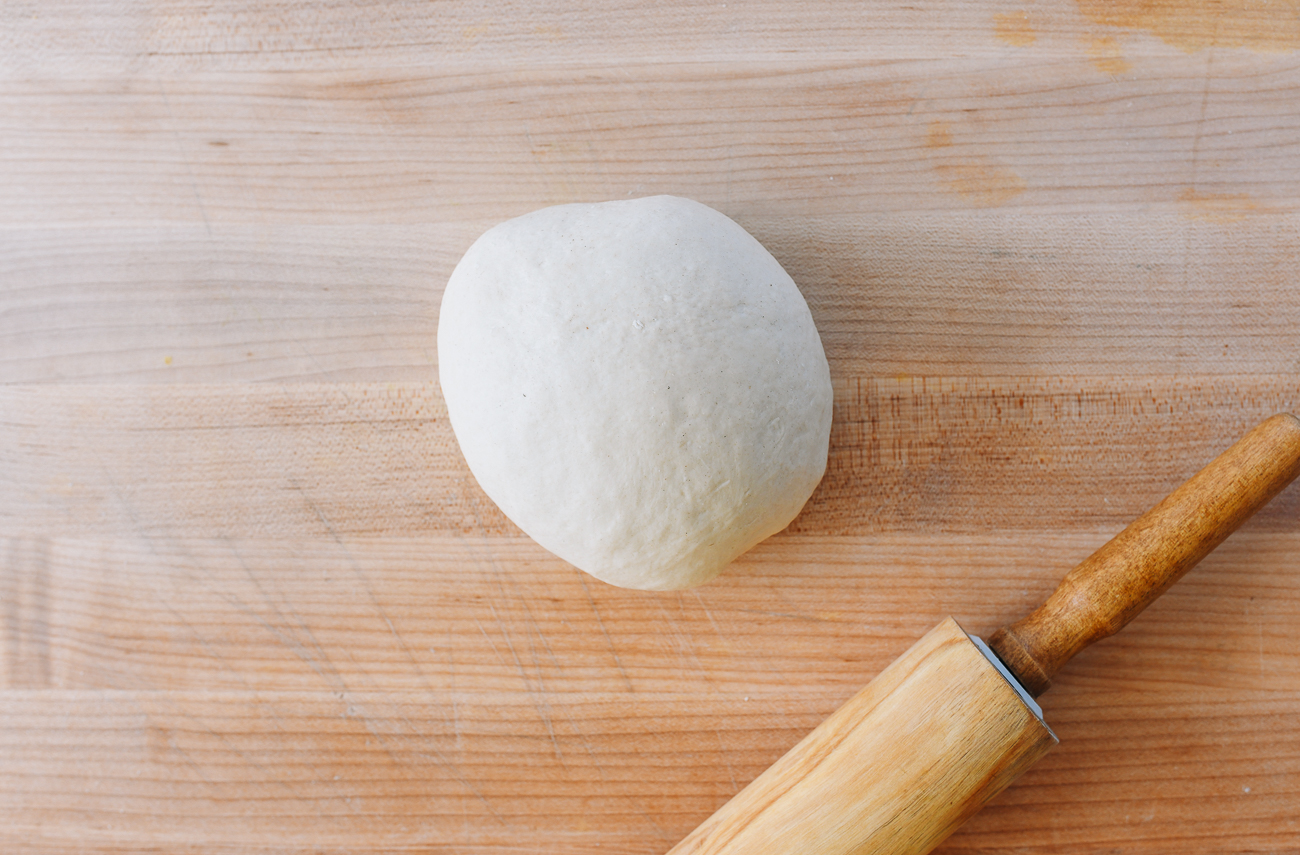
After 20 minutes, if the dough is too sticky to pull away cleanly from the bowl, add a little extra flour 1 tablespoon at a time. You may need up to 2 tablespoons, but not much more than that. Let the flour incorporate and then turn the dough out onto a clean work surface.
Meanwhile, mix together the five spice powder and salt in a small bowl. Line a bamboo steamer (you’ll need two layers) with a round piece of perforated parchment paper or damp cheesecloth. Set aside.
You’ll know the dough is right if you can roll it out without flouring your work surface. Roll the dough out into a large rectangle, roughly 9×18 inches (20×45 cm).
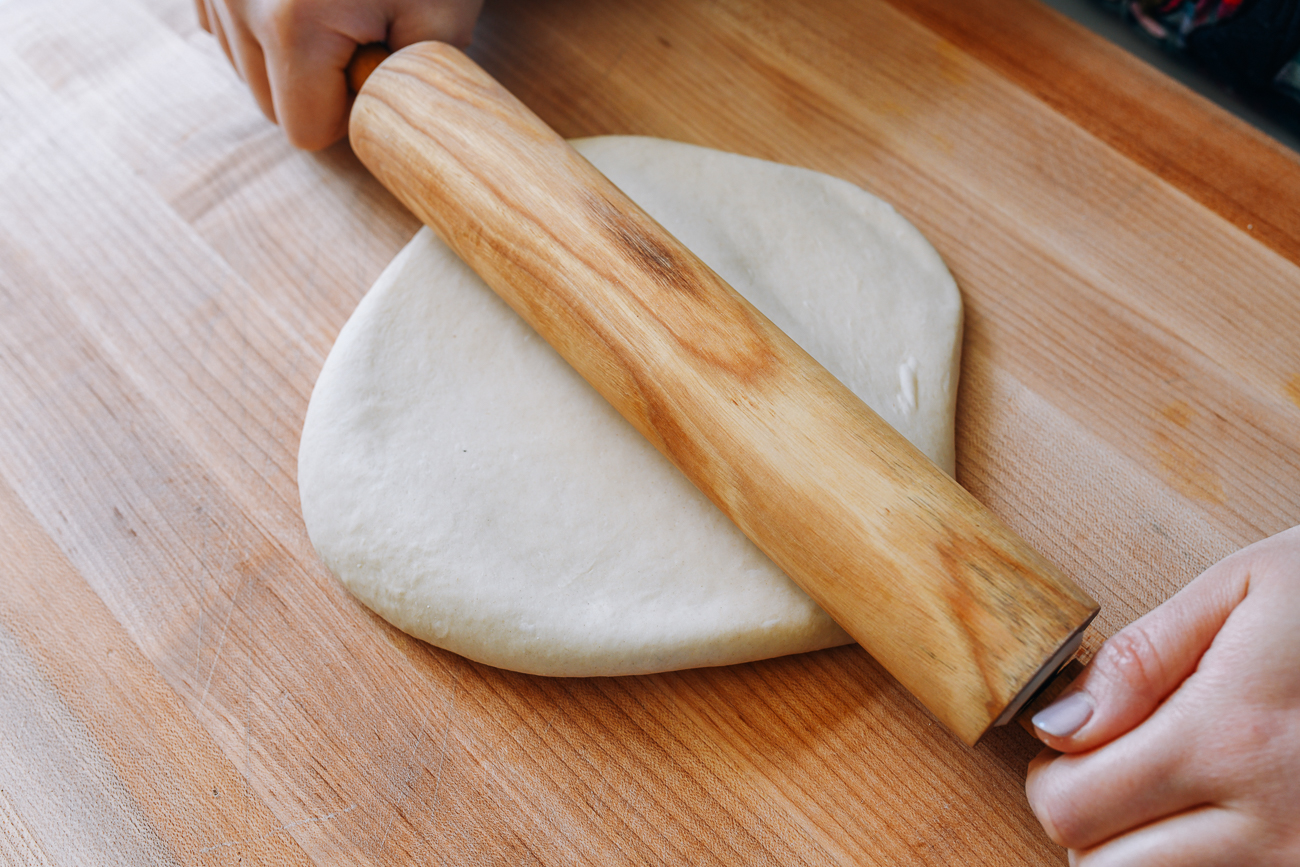
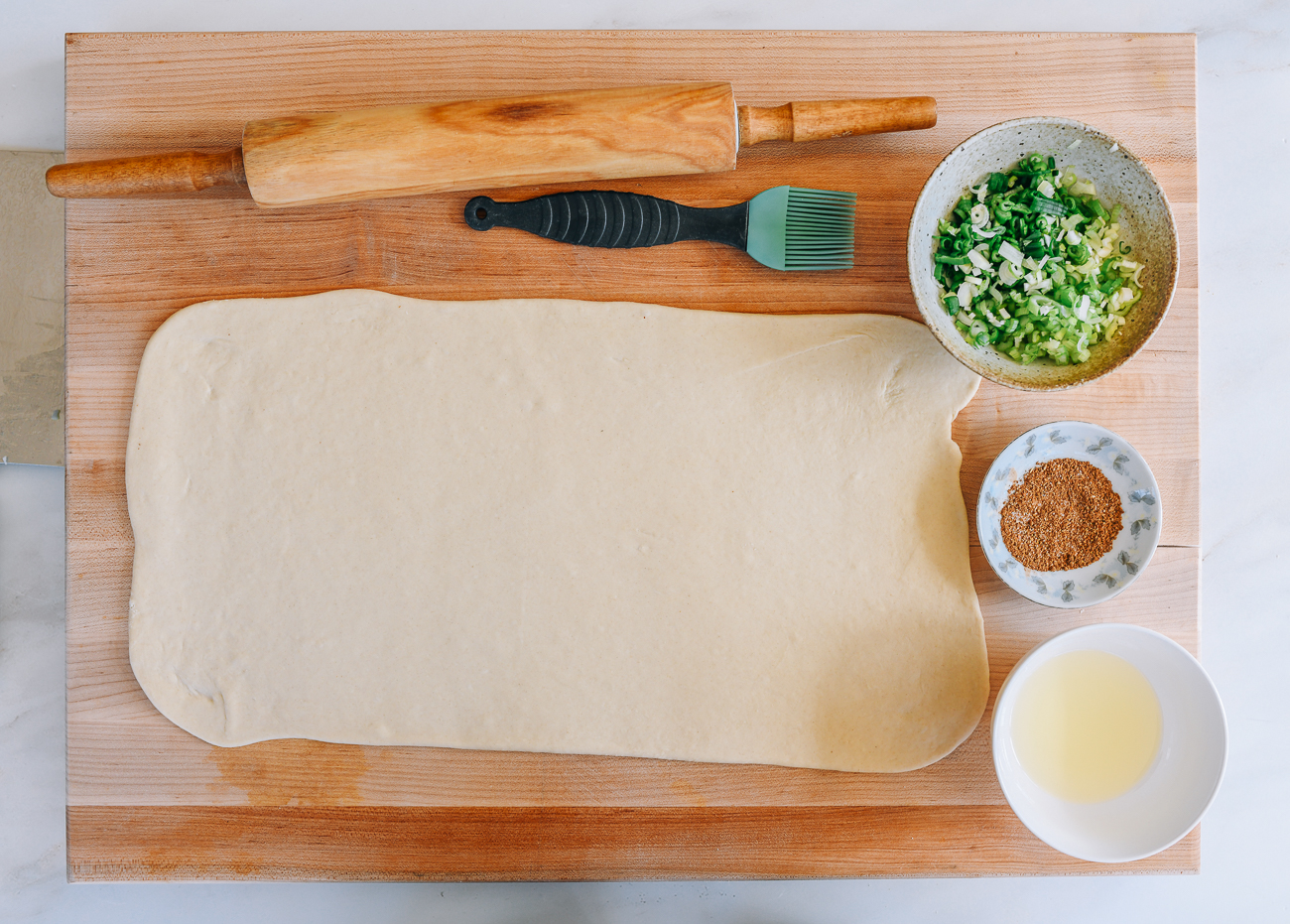
Brush the dough all over with a thin layer of oil. Sprinkle evenly with all of the five spice mixture, followed by all of the scallions.
Fold the dough lengthwise by a third. Brush the exposed clean side of the dough with a thin layer of oil.
Then fold the opposite side over it. Cut the dough in half then in halves again until you have 16 strips of folded dough.
To assemble the buns, take one strip of dough, brush the top with a little oil, and top with a second strip of dough.
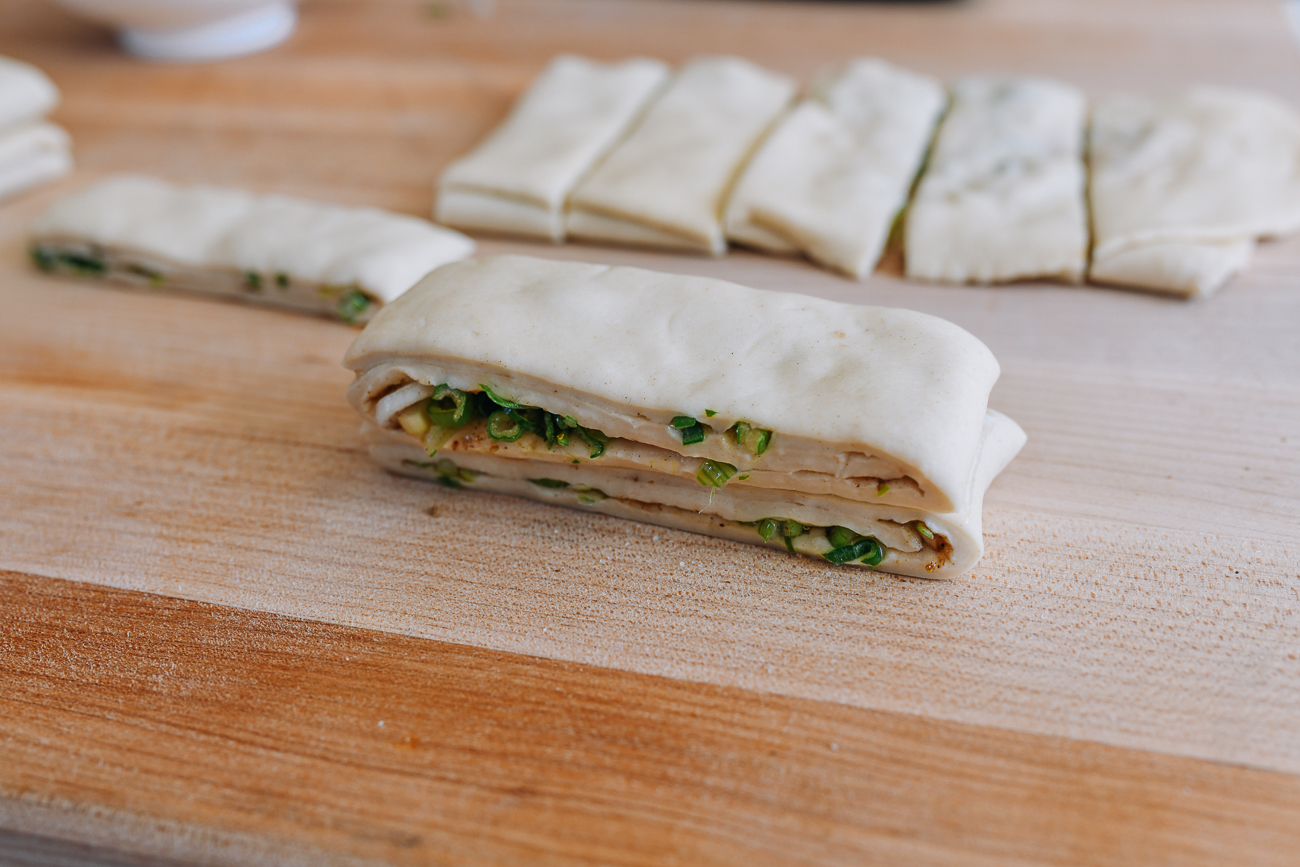
Press a chopstick along the length of the strips to make an indentation.
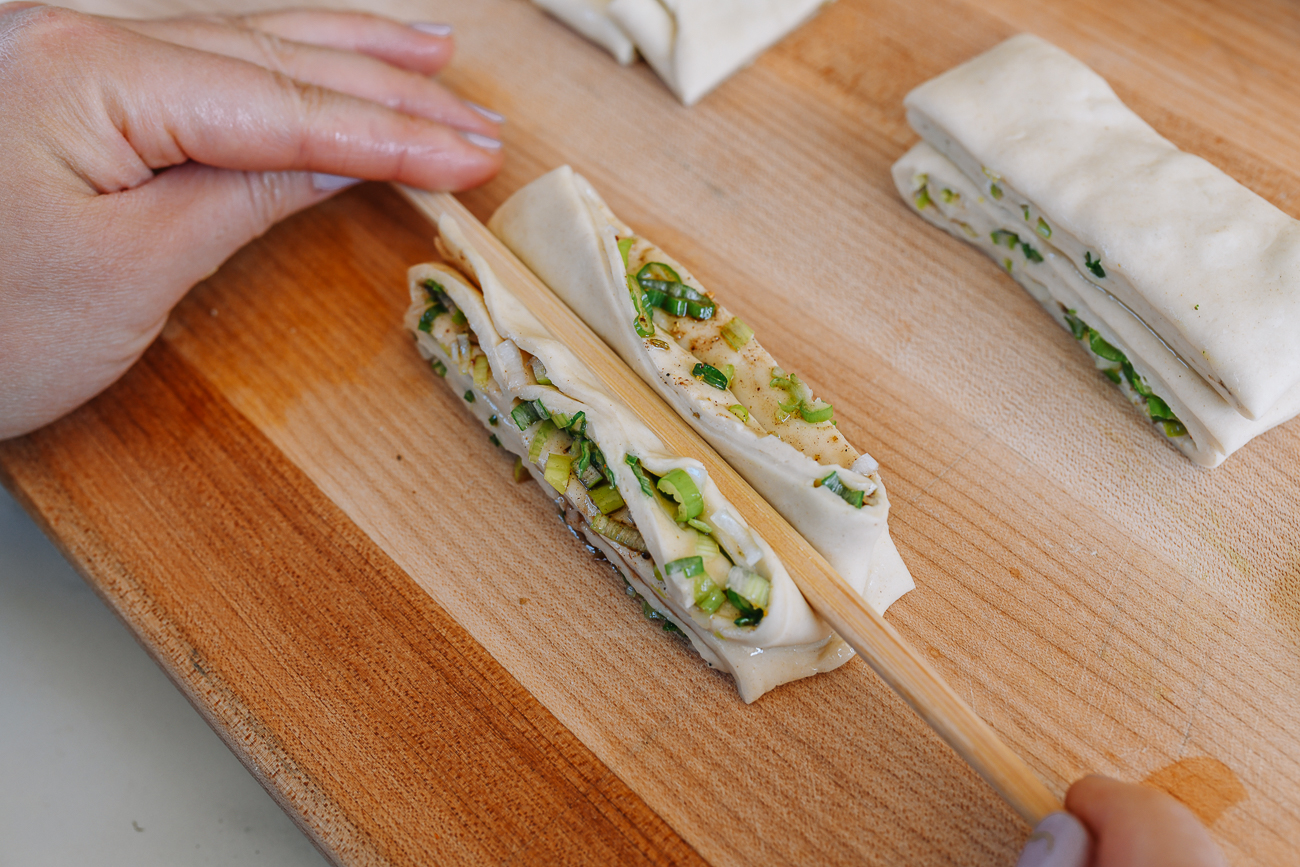
Grabbing both ends of the dough, one in each hand, gently stretch the dough and twist it a few times.
Then, tie it in a rough knot so you end up with a round bun shape.
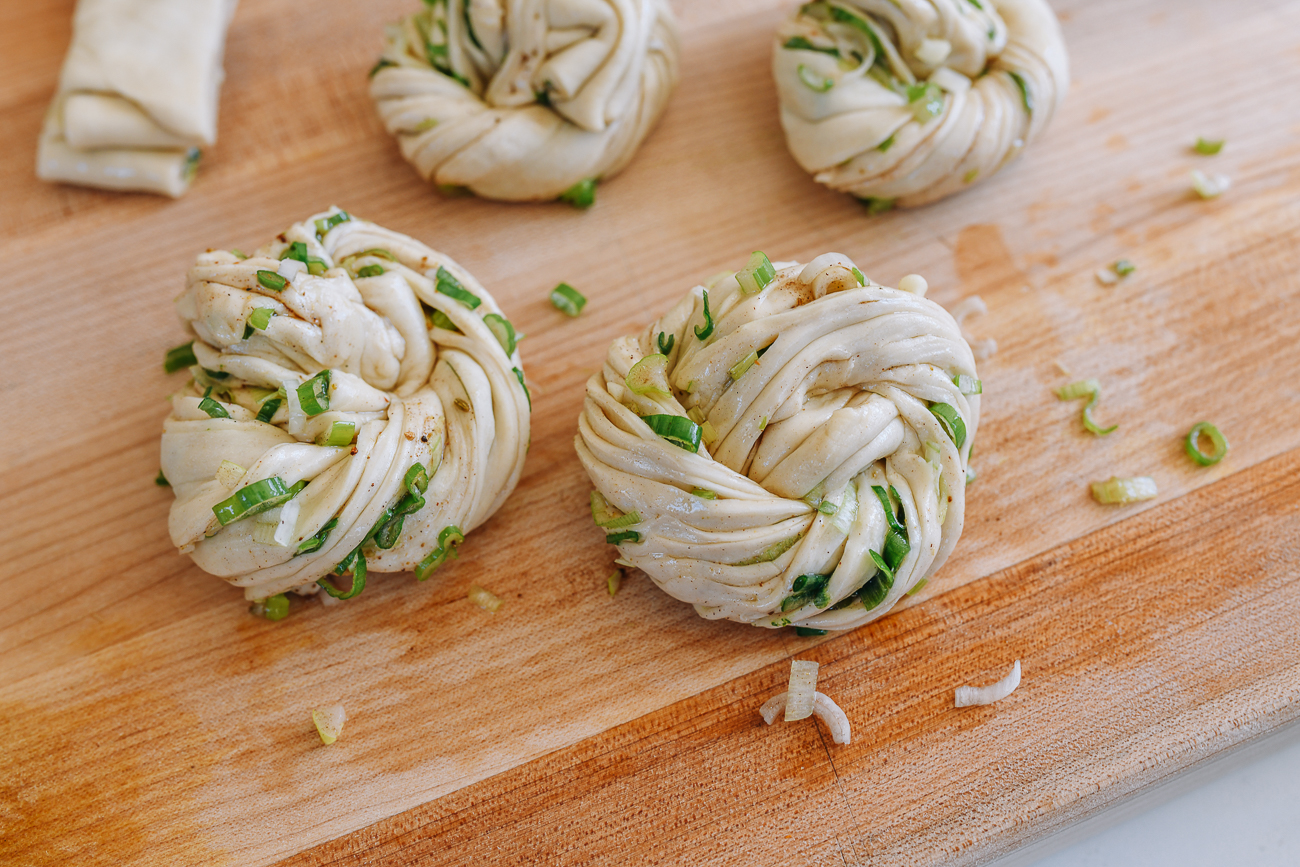
Repeat with the remaining dough until you have 8 buns. Place 4 buns on each level of your steamer. Cover and set in a warm place to proof for 30 minutes.
When you’re ready to steam the buns, fill your wok with water, and place the steamer in it (the water shouldn’t go higher than ½-inch up the sides of the bamboo steamer).
Turn the heat on to medium-high, and set a timer for 15 minutes. At or near the 10-minute mark, you should see steam rising aound the bamboo lid. Once the 15 minutes have passed, turn off the heat, and keep the lid ON the buns for 10 minutes. (If you lift the lid immediately, the buns will collapse).
You can enjoy these steamed buns right away, or pan-fry them first.
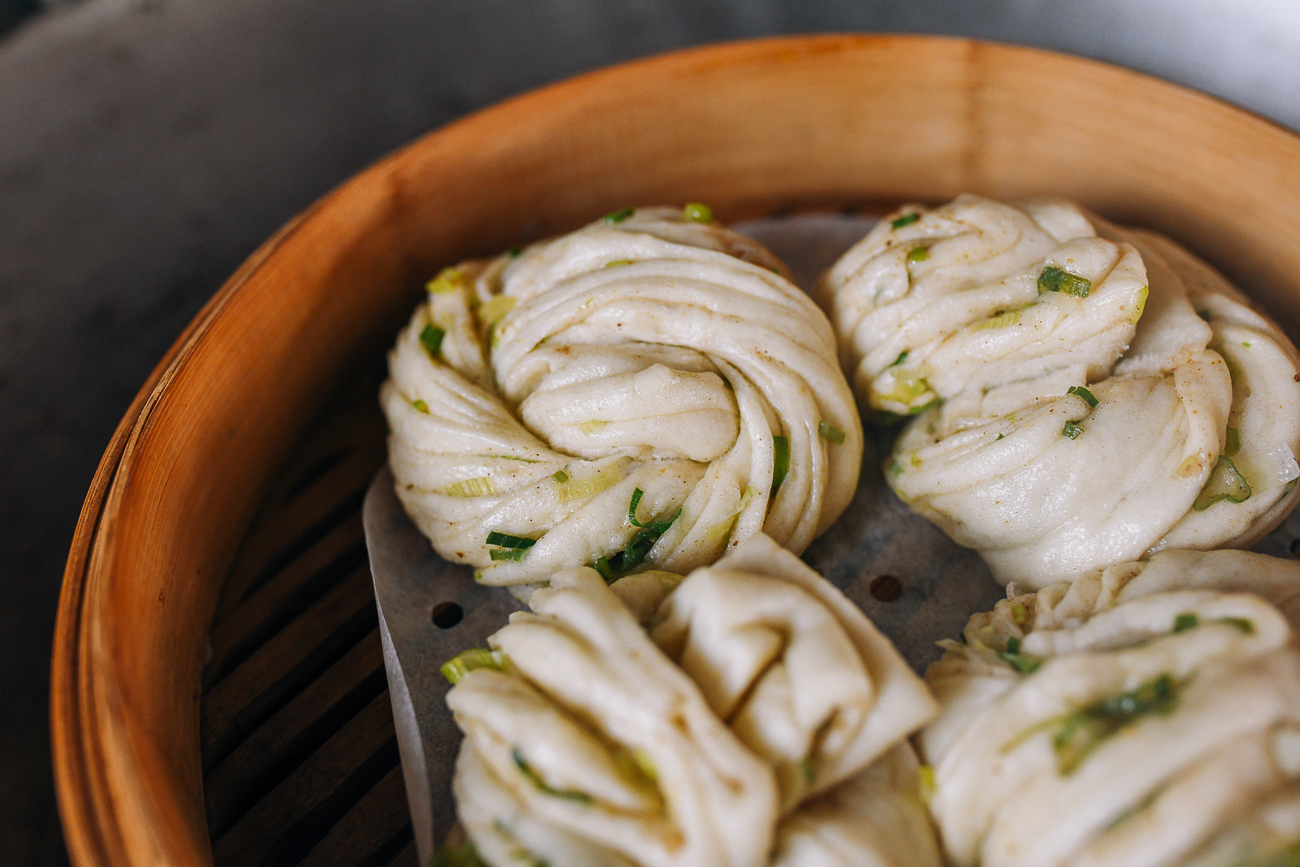
To pan-fry the hua juan, heat a nonstick or cast iron skillet with a generous drizzle of oil, and add the steamed hua juan to the pan.
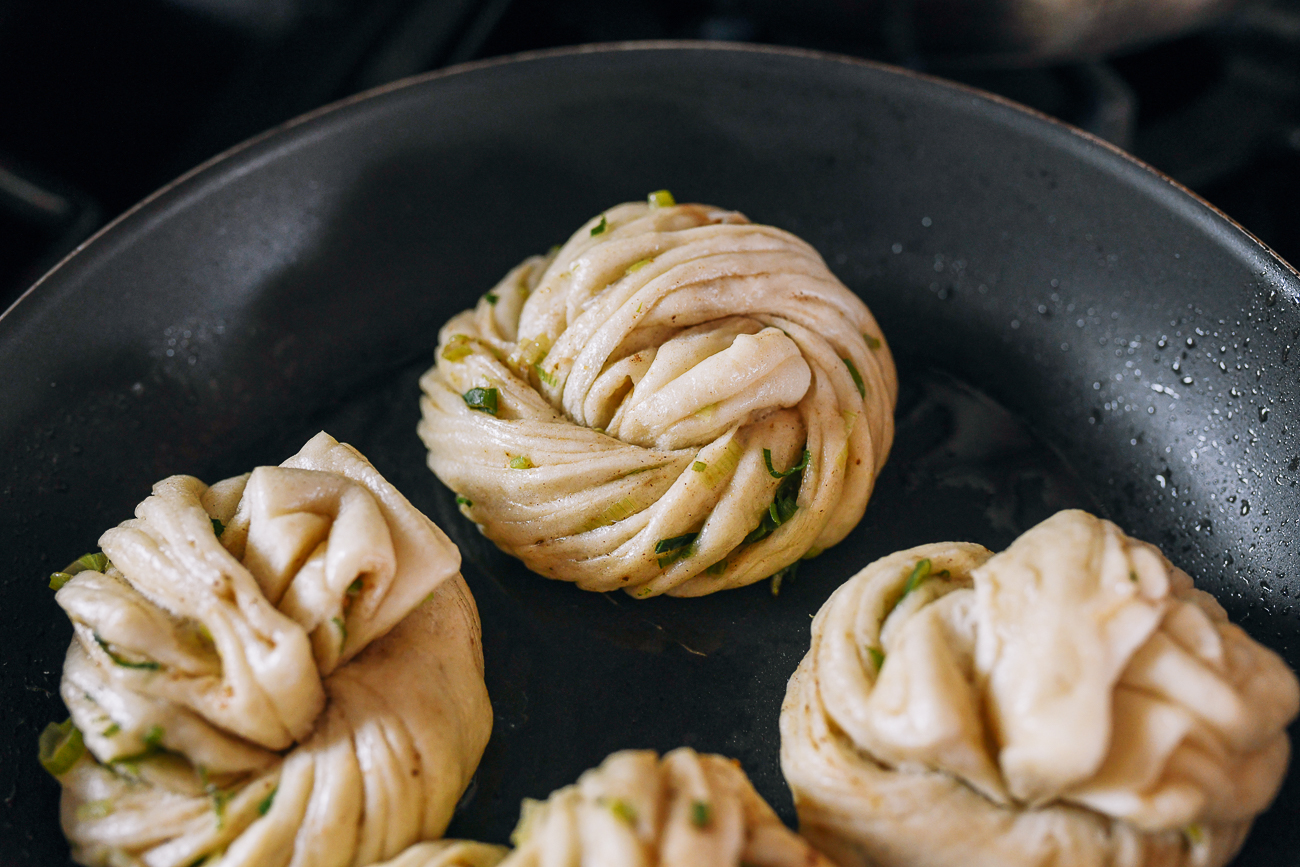
Once they’re golden and crispy on the bottom, remove from the pan and enjoy!
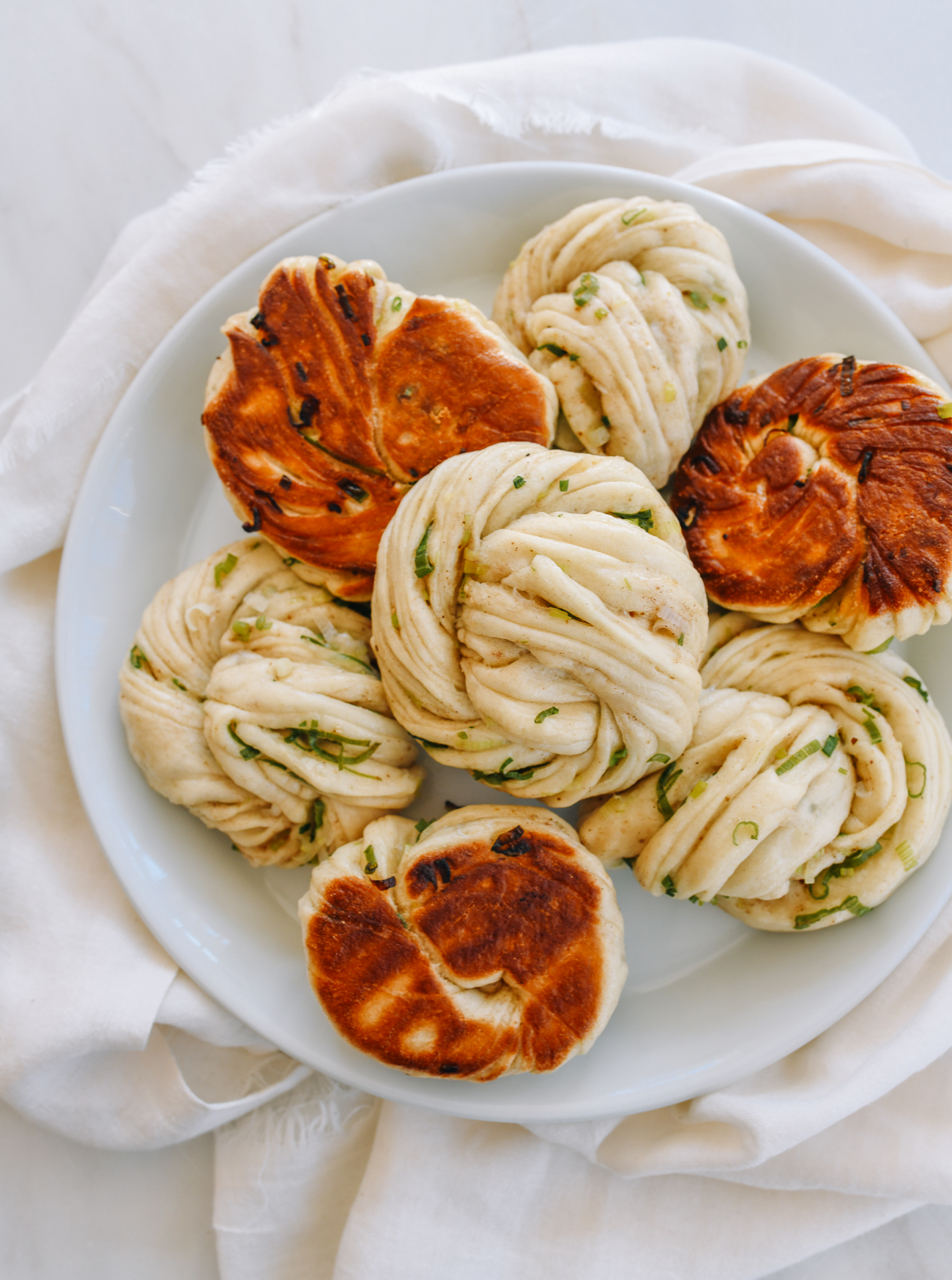
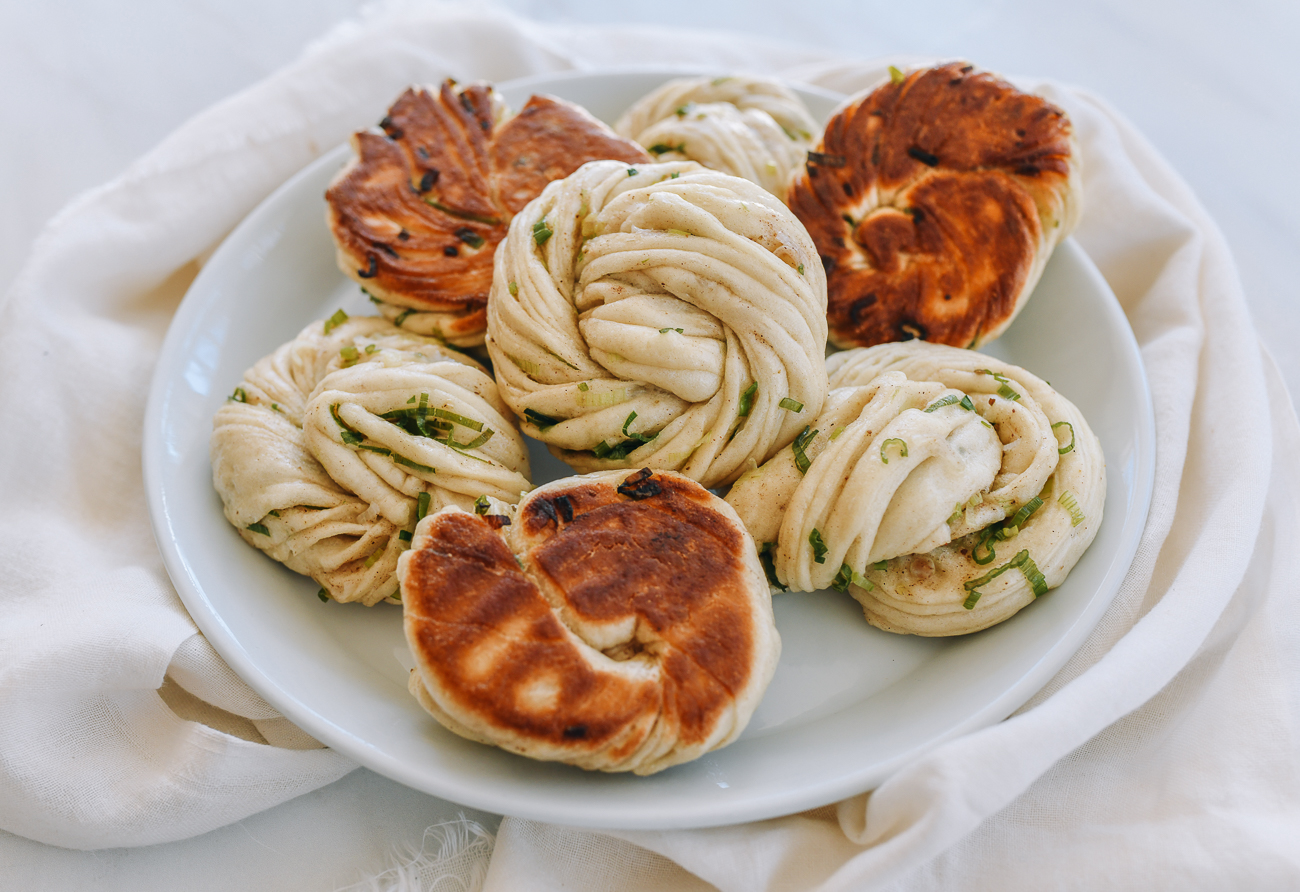
Looking for more authentic recipes? Subscribe to our email list and be sure to follow us on Pinterest, Facebook, Instagram, and Youtube!
Recipe
Hua Juan (Chinese Flower Rolls/Steamed Scallion Buns)
Ingredients
For the dough:
- 3/4 cup lukewarm water (scant 3/4 cup, i.e. slightly less than a full 3/4 cup)
- 1 teaspoon active dry yeast
- 1 tablespoon sugar
- 2 cups all-purpose flour
- 1 teaspoon baking powder
- 1/4 teaspoon salt
For assembling the hua juan:
- 1/2 teaspoon five spice powder
- 1/2 teaspoon salt
- 2 tablespoons neutral oil (plus more for browning the buns)
- 2 scallions (washed, very thoroughly dried, and then finely chopped; 2 medium scallions = about 1/2 cup)
Instructions
- In a liquid measuring cup, add the water, yeast, and sugar. Stir and let the mixture stand at room temperature for 15 to 20 minutes, until foamy. (This may take longer in colder temperatures).
- To the bowl of a stand mixer fitted with the dough hook attachment, add the flour, baking powder, and ¼ teaspoon salt. Turn the mixer on low to combine the dry ingredients, then gradually add the water. Once the dough comes together, let the mixer knead the dough for 20 minutes. It may look sticky at first, but the flour will absorb the water during kneading, and it should soon look smooth, with no dough sticking to the sides of the bowl. (If you don’t have a stand mixer, you can start by stirring the water into the dry ingredients with a wooden spoon or rubber spatula, and then knead by hand.)
- After 20 minutes, if the dough is too sticky to pull away cleanly from the bowl, add a little extra flour, 1 tablespoon at a time. You may need up to 2 tablespoons, but not much more than that. Let the flour incorporate and then turn the dough out onto a clean work surface.
- Meanwhile, mix together the five spice powder and salt in a small bowl. Line a bamboo steamer (you’ll need two layers) with a round piece of perforated parchment paper or damp cheesecloth. Set aside.
- You’ll know the dough is right if you can roll it out without flouring your work surface. Roll the dough out into a large rectangle, roughly 9×18 inches (20×45 cm).
- Brush the dough all over with a thin layer of oil. Sprinkle evenly with all of the five spice mixture, followed by all of the scallions.
- Fold the dough lengthwise by a third. Brush the exposed clean side of the dough with a thin layer of oil, then fold the opposite side over it. Cut the dough in half then in halves again until you have 16 strips of folded dough.
- To assemble the buns, take one strip of dough, brush the top with a little oil, and top with a second strip of dough. Press a chopstick along the length of the strips to make an indentation. Grabbing both ends of the dough, one in each hand, gently stretch the dough and twist it a few times. Then, tie it in a rough knot so you end up with a round bun shape.
- Repeat with the remaining dough until you have 8 buns. Place 4 buns on each level of your steamer, cover, and set in a warm place to proof for 30 minutes.
- When you’re ready to steam the buns, fill your wok with water, and place the steamer in it (the water shouldn’t go higher than ½-inch up the sides of the bamboo steamer). Turn the heat on to medium-high, and set a timer for 15 minutes. At or near the 10-minute mark, you should see steam rising around the bamboo lid. Once the 15 minutes have passed, turn off the heat, and keep the lid ON the buns for 10 minutes. (If you lift the lid immediately, the buns will collapse).
- You can enjoy these steamed buns right away, or pan-fry them first. To pan-fry the hua juan, heat a nonstick or cast iron skillet with a generous drizzle of oil, and add the steamed hua juan to the pan. Once they’re golden and crispy on the bottom, remove from the pan and enjoy!
